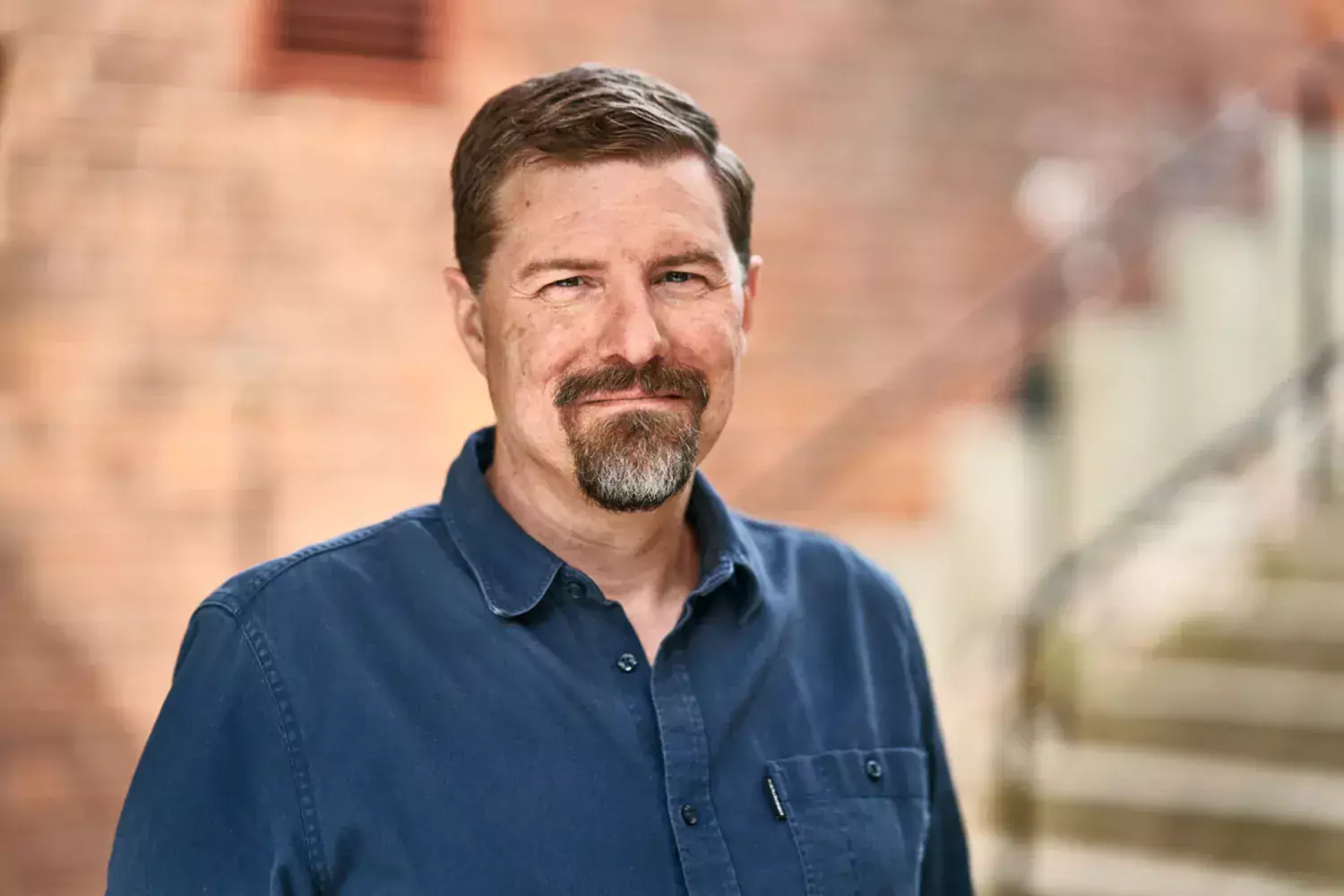 Photo: Erik Flyg
Photo: Erik Flyg
- >
- >
- >
Perception Neuroscience – Johan Lundström's research group
The Perception Neuroscience group conducts basic research aimed toward a better understanding of the neural and behavioral function of the olfactory system, and how it interacts with the other senses to interpret our environment in health and disease.
 Photo: Erik Flyg
Photo: Erik Flyg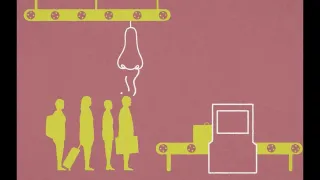
Psychological smell research

Non-invasive olfactory bulb measure
Research news
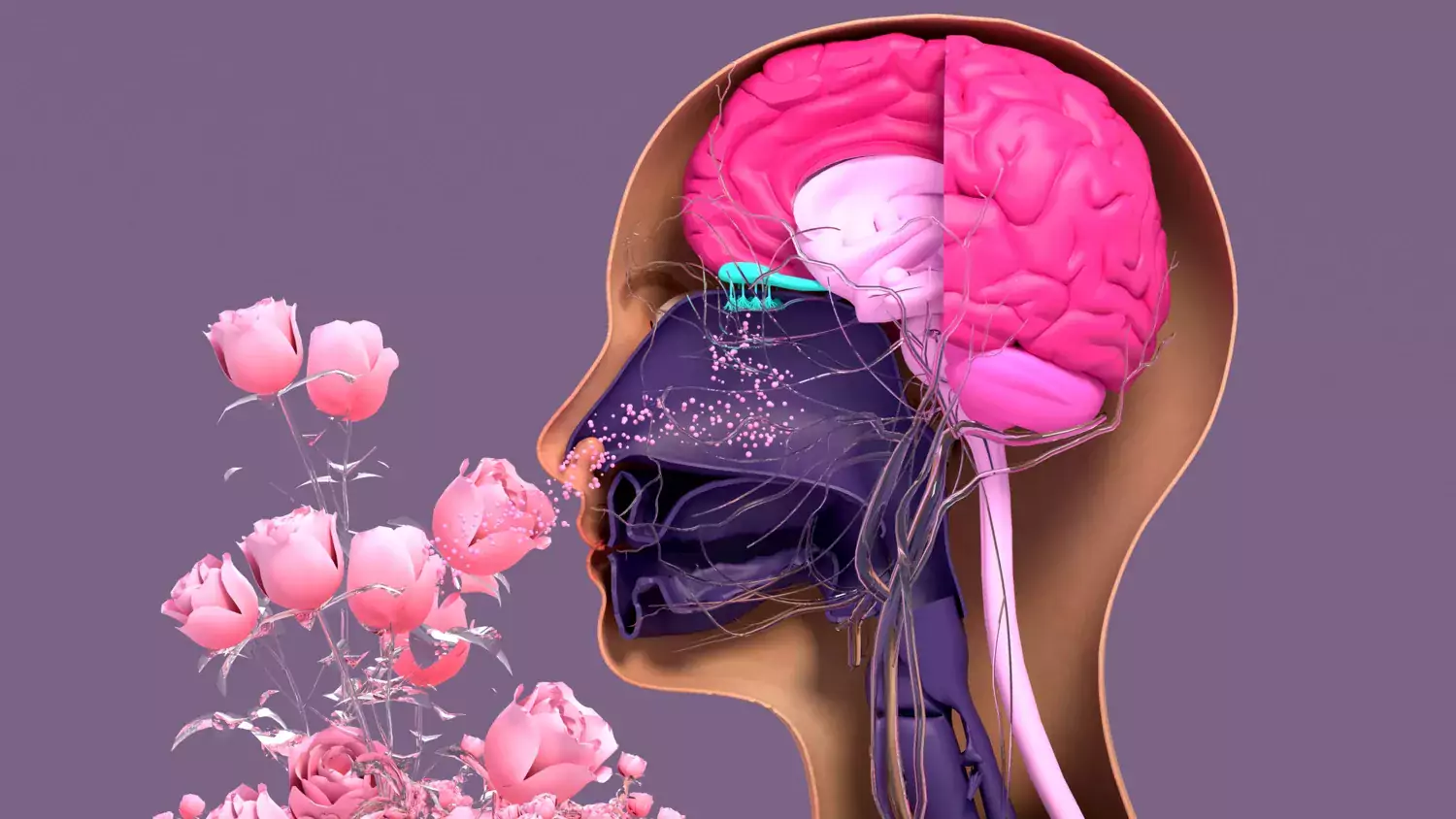 Photo: getty images,Getty Images/iStockphoto
Photo: getty images,Getty Images/iStockphotoJohan Lundström receives ERC Synergy Grant
Johan Lundström receives ERC Synergy Grant to develop digital scent transmission
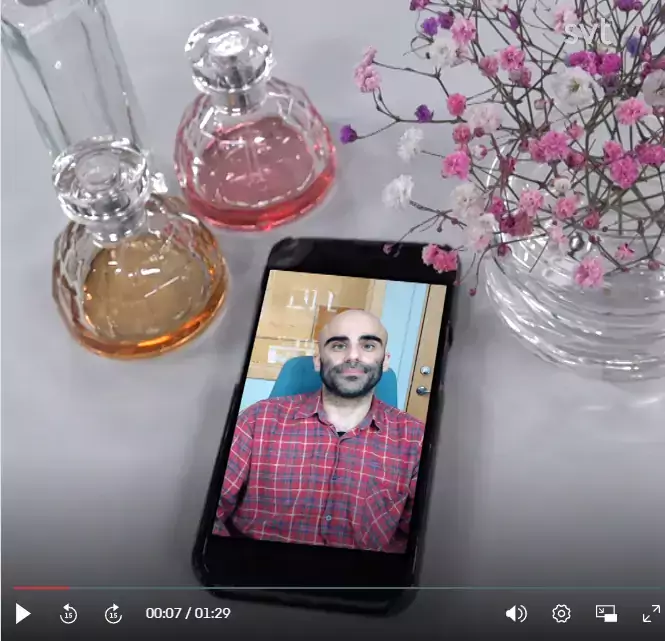 Photo: Julia Hedlund/SVT
Photo: Julia Hedlund/SVTDoftforskare om parfymboomen: ”Räcker inte med att man doftar gott”
Kan parfymer påverka hur man upplevs av andra? – hör forskaren Artin Arshamian om dofter
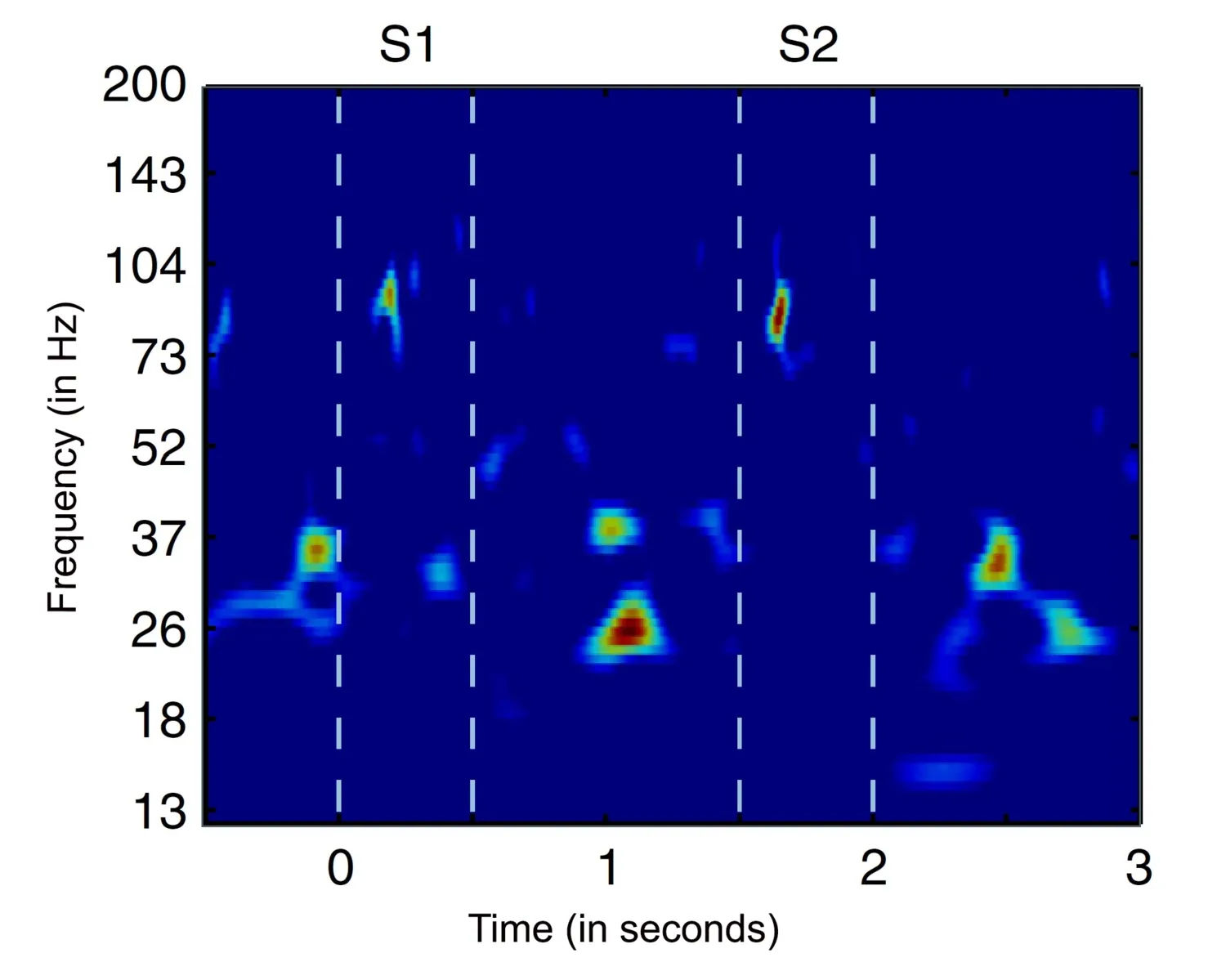 Photo: N/A
Photo: N/AIn the brain, bursts of beta rhythms implement cognitive control
Bursts of brain rhythms with “beta” frequencies control where and when neurons in the cortex process sensory information and plan responses. Studying these bursts would improve understanding of cognition and clinical disorders, researchers argue in a new review.
More from Perception Neuroscience Lab
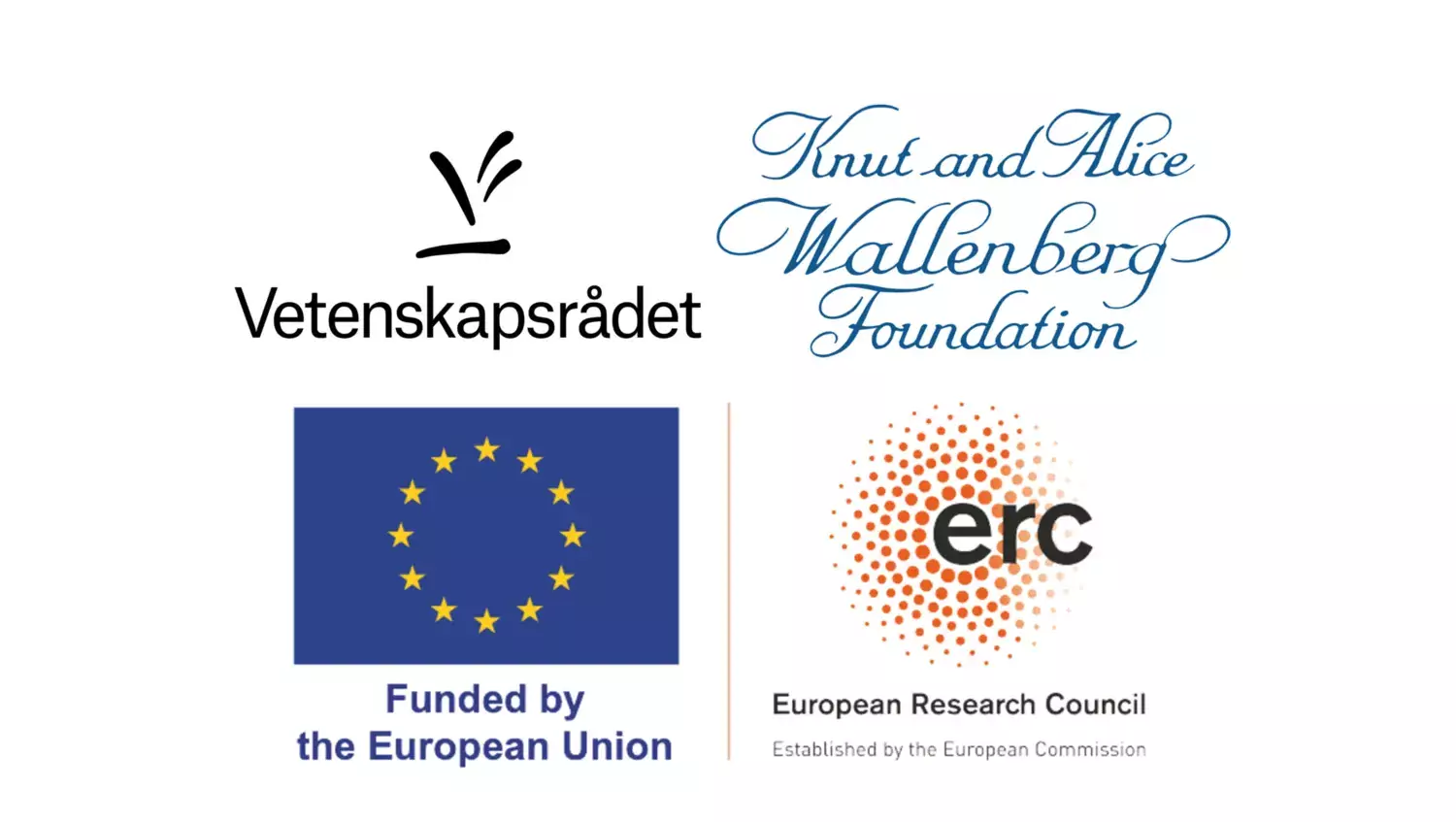 Photo: N/A
Photo: N/AFunded by
 Photo: GettyImages
Photo: GettyImagesMedia presence
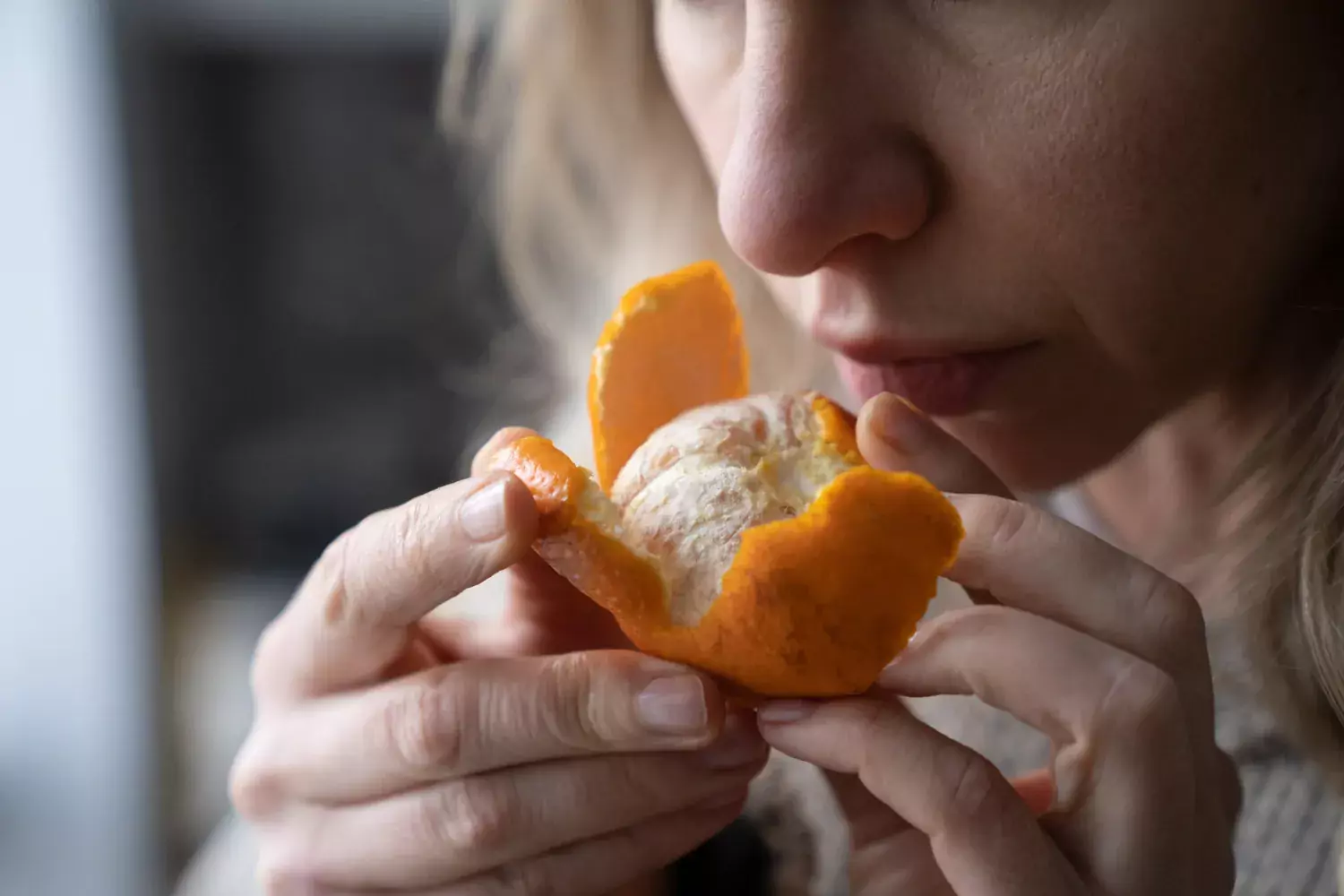 Photo: Dima Berlin,Getty Images
Photo: Dima Berlin,Getty ImagesParticipate in a study
Research focus
Cognition in olfaction
Olfaction is to a large degree studied from the sensory processing perspective. Here we instead study the behavioral and neural implications of olfactory cognition. Using neural imaging and behavioral studies we will establish the limits of human olfactory cognition and the underlying neural mechanisms. How do we keep olfactory percepts temporarily in mind, and are we able reshape these percepts to aid behavior? Do we have similar attentional and top-down processing abilities in olfaction as in other sensory modalities? Are analogous brain areas involved in the cognitive processing of olfactory stimuli as in the more investigated visual cognition?
Early detection of parkinson’s disease
The olfactory bulb is where Parkinson’s Disease starts in the brain. Based on our new method to measure signal from the olfactory bulb, we are currently assessing whether the measure can be used as an early detector of Parkinson’s Disease onset. If successful, this would mean that we most probably can detect Parkinson’s Disease many years before the onset of the characteristic motor symptoms that is so characteristic for the disease. We are also currently exploring whether we can reverse the measure to stimulate the olfactory bulb and potentially slow the spread of the disease.
Human olfactory bulb processing
We recently demonstrated a new method to measure signals from the human olfactory bulb, an area of the human brain that that was not accessible without resorting to intracranial recordings. We are in this project, under the leadership of Dr. Johan Lundström, assessing what role the olfactory bulb has in human odor perception and action. Moreover, we are also assessing whether this measure might serve as an early indicator of Parkinson’s disease.
Links between breathing and performance
Respiration is one of the fundamental rhythms of life, with its effects stretching far beyond basic oxygenation. Recent studies have demonstrated that breathing modulates how we process basic perceptual stimuli and tentative evidence also indicate that breathing might regulate cognitive processes. In this project under the leadership of Dr. Artin Arshamian, we are assessing how this rhythmic activity, repeated 9-24 times each minute, shapes basic perception and cognition and what neural mechanisms allow this integration between breathing and perception/cognition.
Multisensory integration with odors
Outside the confined environment of the laboratory, smells are very rarely experienced by themselves, without the contextual information provided by our other senses. This project, under the leadership of Dr. Johan Lundström, is concerned with two fundamental perceptual neuroscience question: how is congruent information from our other sensory modalities influencing the processing of odors and what role does the olfactory cortex, if any, have in this?
Olfactory plasticity
The sense of smell is a sensory system that is characterized by both large inter- as well as intra- individual differences. The sense of smell is also very plastic where sensitivity towards individual odors can shift either rapidly or over time. Under the leadership of Dr. Lundström, the general aim of this project is to understand what the neural mechanisms, and their behavioral consequences, are that allow the sense of smell to adapt so fast to our environment. In doing this, we assess behavioral and neural measures in both healthy individuals as well as clinical populations with various etiology.
Working memory and generalization
In this project we study the primate ability to generalize. Working memory refers to our ability to temporarily hold a limited set of information in a particular online state that allows us to access and manipulate this information. Importantly, these abilities generalize to any information and not just information we previously trained to perform such manipulations on. We test the novel theory that these abilities, along with many other aspects of generalization, builds on utilizing the spatial structure of cortex. To test this we study spatiotemporal dynamics of brain activity, including brain oscillations and travelling waves. We also perform network simulations where we explore the computational power of this theory.
Publications
Selected publications
- Article: NATURE COMMUNICATIONS. 2020;11(1):648Iravani B; Arshamian A; Ohla K; Wilson DA; Lundstrom JN
- Article: CORTEX. 2019;120:116-130Peter MG; Porada DK; Regenbogen C; Olsson MJ; Lundstrom JN
- Article: NEUROSCIENCE. 2019;418:254-265Porada DK; Regenbogen C; Seubert J; Freiherr J; Lundstrom JN
- Article: CEREBRAL CORTEX. 2019;29(7):3023-3033Lundstrom JN; Regenbogen C; Ohla K; Seubert J
- Article: JOURNAL OF NEUROSCIENCE. 2018;38(48):10286-10294Arshamian A; Iravani B; Majid A; Lundstrom JN
All publications from group members
- Preprint: OPENRXIV. 2025Winter AL; Sahlstrand PN; Lundstrom JN
- Journal article: JOURNAL OF NEUROSCIENCE METHODS. 2025;424:110598Norden F; Zanettin I; Olsson T; Arshamian A; Lundqvist M; Darki F; Lundstrom JN
- Editorial: BEHAVIORAL AND BRAIN SCIENCES. 2025;48:e140Francis G; Thunell E
- Preprint: BIORXIV. 2025Winter AL; Peter M; Thunell E; Lundström JN; Darki F
- Article: BRAIN RESEARCH. 2025;1864:149812Seidel L; Kilteni K; Lundstrom JN; Seubert J
- Preprint: PSYARXIV. 2025Orthy W; Beygi B; Yazdi H
- Preprint: PSYARXIV. 2025Orthy W; Beygi B; Yazdi H
- Preprint: PSYARXIV. 2025Yazdi H; Dimoski I; Gerikj D; de la Paz Celorio Mancera M; Lundström J
- Article: EUROPEAN PSYCHIATRY. 2025;68(1):e141-21Papenberg G; Moller MC; Markovic G; Borg K; Stenberg J; Hedstrom S; Smids F; Norrman E; Aejmelaeus-Lindstrom A; Kalpouzos G; Laukka EJ
- Article: SCIENTIFIC REPORTS. 2025;15(1):32459Eliasson ET; Vigna E; Dal Bo E; Cecchetto C; Zurlo L; Gentili C; Scilingo EP; Greco A; Di Francesco F; Citi L; Vanello N; Lundstrom JN; Hadlaczky G; Carli V
- Journal article: PNAS NEXUS. 2025;4(9):pgaf293Varnum MEW; Kirsch AP; Beal DJ; Pick CM; Al-Shawaf L; Ambrosio C; Barbato MT; Barry O; Boonyasiriwat W; Brandstatter E; Ceylan-Batur S; Varella MAC; Cruz JE; David O; Dieng LN; Dubois D; Fernandez AM; Galdi S; Caballero OJG; Graf S; Grossmann I; Guzman D; Halama P; Hamamura T; Hrebickova M; Iuga I; Javela L; Jung J; Karl JA; Kim JP; Kohut M; Mafra AL; Ndiaye DG; Jiaqing O; Sanchez BP; Unzueta ER; Rizwan M; Sevincer AT; Skoog E; Suh EM; Sznycer D; Thunell E; Tognetti A; Uskul AK; Valentova JV; Wee YN; Winter AL; Young TP; Zambrano D; Ziska A; Kenrick DT
- Doctoral thesis: 2025Yazdi H
- Preprint: BIORXIV. 2025;BIORXIVOlsson T; Joshi A; Schaefer M; Arshamian A; Hummel T; Lundström J; Darki F
- Article: RHINOLOGY. 2025;63(4):477-485Winter AL; Henecke S; Thunell E; Swartz M; Martinsen J; Johnson PS; Lundstrom JN
- Article: PNAS NEXUS. 2025;4(8):pgaf239Varnum MEW; Kirsch AP; Beal DJ; Pick CM; Al-Shawaf L; Ambrosio C; Barbato MT; Barry O; Boonyasiriwat W; Brandstatter E; Ceylan-Batur S; Correa Varella MA; Cruz JE; David O; Ngom Dieng L; Dubois D; Fernandez AM; Galdi S; Galindo Caballero OJ; Graf S; Grossmann I; Guzman D; Halama P; Hamamura T; Hrebickova M; Iuga I; Javela L; Jung J; Karl JA; Kim JP; Kohut M; Mafra AL; Ndiaye DG; Jiaqing O; Perez Sanchez B; Unzueta ER; Rizwan M; Sevincer AT; Skoog E; Suh EM; Sznycer D; Thunell E; Tognetti A; Uskul AK; Valentova JV; Wee YN; Lundkvist Winter A; Young TP; Zambrano D; Ziska A; Kenrick DT
- Preprint: BIORXIV. 2025Nordén F; Zanettin I; Olsson T; Arshamian A; Lundqvist M; Darki F; Lundström J
- Preprint: BIORXIV. 2025Nordén F; Zanettin I; Lundqvist M; Arshamian A; Lundström JN
- Article: SCIENTIFIC REPORTS. 2025;15(1):18404Rajabi N; Zanettin I; Ribeiro AH; Vasco M; Bjorkman M; Lundstrom JN; Kragic D
- Article: CORTEX. 2025;186:74-85Thunell E; Peter M; Iravani B; Porada DK; Prenner K; Darki F; Lundstrom JN
- Article: BEHAVIOURAL BRAIN RESEARCH. 2025;484:115487Saluja S; Toth AL; Peter MG; Fondberg R; Tognetti A; Lundstrom JN
- Article: JOURNAL OF NEUROSCIENCE. 2025;45(14):e1159242024Schicker D; Khorisantono PA; Dervishi QR; Lim SXL; Saruco E; Pleger B; Schultz J; Ohla K; Freiherr J
- Article: JOURNAL OF PHYSIOLOGY-LONDON. 2025;603(6):1607-1625Schaefer M; Mathot S; Lundqvist M; Lundstrom JN; Arshamian A
- Article: SCIENTIFIC DATA. 2025;12(1):325Bierling AL; Croy A; Bilem F; Bloy L; Ho FY-Y; Jimenez AF; Kyjakova P; Mastinu M; Power Guerra N; Sailer U; Schirmer A; Silva EC; Surakka V; Takau L; Thunell E; Verma K; Zyzelewicz BR; Majid A; Croy I
- Article: FRONTIERS IN PSYCHOLOGY. 2025;16:1483965Yazdi H; Ljung Aust M; Wickman C; Bujacz A; Kowalski L; Lundstrom JN
- Newspaper article: THE CONVERSATION. 2025Schaefer M
- Preprint: ELIFE SCIENCES PUBLICATIONS, LTD. 2025Rabuffo G; Bandyopadhyay A; Calabrese C; Gudibanda K; Depannemaecker D; Takarabe LM; Saggio ML; Desroches M; Ivanov A; Linne M-L; Bernard C; Petkoski S; Jirsa VK
- Preprint: ELIFE SCIENCES PUBLICATIONS, LTD. 2025Rabuffo G; Bandyopadhyay A; Calabrese C; Gudibanda K; Depannemaecker D; Takarabe LM; Saggio ML; Desroches M; Ivanov A; Linne M-L; Bernard C; Petkoski S; Jirsa VK
- Article: JOURNAL OF AFFECTIVE DISORDERS. 2025;369:1082-1089Sniffing out a solution: How emotional body odors can improve mindfulness therapy for social anxietyCecchetto C; Dal Bo E; Eliasson ET; Vigna E; Natali L; Scilingo EP; Greco A; Di Francesco F; Hadlaczky G; Lundstrom JN; Carli V; Gentili C
- Article: NATURE COMMUNICATIONS. 2025;16(1):395Yao S; Harder A; Darki F; Chang Y-W; Li A; Nikouei K; Volpe G; Lundstroem JN; Zeng J; Wray NR; Lu Y; Sullivan PF; Hjerling-Leffler J
- Article: SCIENTIFIC REPORTS. 2024;14(1):28613Yazdi H; Wickman C; Aust ML; Selbing I; Kowalski L; Axelsson J
- Article: NATURE COMMUNICATIONS. 2024;15(1):8950Liljefors J; Almeida R; Rane G; Lundstrom JN; Herman P; Lundqvist M
- Article: PROCEEDINGS OF THE NATIONAL ACADEMY OF SCIENCES OF THE UNITED STATES OF AMERICA. 2024;121(42):e2315160121Xiong YS; Donoghue JA; Lundqvist M; Mahnke M; Major AJ; Brown EN; Miller EK; Bastos AM
- Article: FOOD QUALITY AND PREFERENCE. 2024;119:105211Khorisantono PA; Fondberg R; Lundstrom JN; Seubert J
- Article: PSYCHOPHYSIOLOGY. 2024;61(10):e14609Thunell E; Francis G; Dal Bo E; Schaefer M; Lundstrom JN; Arshamian A
- Article: PLOS BIOLOGY. 2024;22(10):e3002849Norden F; Iravani B; Schaefer M; Winter AL; Lundqvist M; Arshamian A; Lundstrom JN
- Preprint: PSYARXIV. 2024Yazdi H; Aust ML; Wickman C; Bujacz A; Kowalski L; Lundström J
- Preprint: PSYARXIV. 2024
- Preprint: PSYARXIV. 2024Sorjonen K; Arshamian A; Lager E; Nilsonne G; Melin B
- Review: TRENDS IN COGNITIVE SCIENCES. 2024;28(7):662-676Lundqvist M; Miller EK; Nordmark J; Liljefors J; Herman P
- Article: PLOS ONE. 2024;19(7):e0306290Frasnelli J; Tognetti A; Winter AL; Thunell E; Olsson MJ; Greilert N; Olofsson JK; Havervall S; Thalin C; Lundstrom JN
- Preprint: BIORXIV. 2024Schaefer M; Mathôt S; Lundqvist M; Lundström J; Arshamian A
- Preprint: MEDRXIV. 2024Winter A; Henecke S; Thunell E; Swartz M; Martinsen J; Johnson PS; Lundström J
- Preprint: PSYARXIV. 2024Sorjonen K; Arshamian A; Lager E; Nilsonne G; Melin B
- Article: SCIENTIFIC REPORTS. 2024;14(1):9921Goto N; Kusumasondjaja S; Tjiptono F; Lim SXL; Shee D; Hatano A; Herachwati N; Schaefer A
- Article: PLOS ONE. 2024;19(4):e0301268Francis G; Petrovic P; Lundstrom JN; Thunell E
- Article: PSYCHOPHYSIOLOGY. 2024;61(4):e14493Schaefer M; Hrysanidis C; Lundstrom JN; Arshamian A
- Article: ENEURO. 2024;11(4):ENEURO.0153-23.2024Markman M; Saruco E; Al-Bas S; Wang BA; Rose J; Ohla K; Xue Li Lim S; Schicker D; Freiherr J; Weygandt M; Rramani Q; Weber B; Schultz J; Pleger B
- Article: RHINOLOGY. 2024;62(2):172-182Hsieh JW; Lenoir V; Sipione R; Hugentobler M; Daskalou D; Lundstrom JN; Senn P; Rimmer J; Becker M; Landis BN
- Preprint: RESEARCH SQUARE. 2024Miller E; Batabyal T; Brincat S; Donoghue J; Lundqvist M; Mahnke M
- Article: HUMAN BRAIN MAPPING. 2024;45(4):e26645Massaccesi C; Korb S; Goetzendorfer S; Chiappini E; Willeit M; Lundstrom JN; Windischberger C; Eisenegger C; Silani G
- Article: BIOLOGICAL PSYCHOLOGY. 2024;187:108770Iravani B; Frasnelli J; Arshamian A; Lundstrom JN
- Preprint: BIORXIV. 2024Chernik C; van den Berg R; Lundqvist M
- Preprint: MEDRXIV. 2024;MEDRXIVYao S; Harder A; Darki F; Chang Y-W; Li A; Nikouei K; Volpe G; Lundström JN; Zeng J; Wray N; Lu Y; Sullivan PF; Leffler JH
- Article: CHEMICAL SENSES. 2024;49:bjae035Cecchetto C; Leleu A; Calce RP; Arnhardt S; Parma V; de Groot JHB; Freiherr J; Gentili C; Zou L; Thunell E; Fischmeister FPS; Rekow D; Dal Bo E
- Article: HUMAN BRAIN MAPPING. 2023;44(18):6459-6470Peter MG; Darki F; Thunell E; Martensson G; Postma EM; Boesveldt S; Westman E; Lundstrom JN
- Preprint: PSYARXIV. 2023Gloy K; Marzuki AA; Schaefer A; Jenkins M; de Vries IEJ; Phon-Amnuaisuk P; Lim S; Wong KY; Enge S; Michael L; Kühnel A; Depow GJ; Inzlicht M; de Mello VO; Arriaga P; Frade S; Jerónimo R; Garrison K; Wahlers J; Akin K; Tullett AM; McDonald C; Roy R; Smith HH; Marsh C; Schmidt E; Stewart R; Elimari N; Lafargue G; Johnson E; Chen K; Mushtaq F; Pavlov Y; Kandler C
- Preprint: BIORXIV. 2023Liljefors J; Almeida R; Rane G; Lundström J; Herman P; Lundqvist M
- Doctoral thesis: 2023Schaefer M
- Preprint: BIORXIV. 2023The how, when, and what of odor valence communication between the olfactory bulb and piriform cortexNordén F; Iravani B; Schaefer M; Winter A; Lundqvist M; Lundqvist M; Arshamian A; Lundström J
- Preprint: PSYARXIV. 2023Khorisantono PA; Fondberg R; Lundström J; Seubert J
- Article: SCIENTIFIC REPORTS. 2023;13(1):16709Gordon AR; Lundstrom JN; Kimball BA; Karshikoff B; Sorjonen K; Axelsson J; Lekander M; Olsson MJ
- Conference publication: EUROPEAN NEUROPSYCHOPHARMACOLOGY. 2023;75:S85Yao S; Harder A; Darki F; Li A; Zeng J; Nikouei K; Lundstrom J; Wray N; Lu Y; Sullivan P; Hjerling-Leffler J
- Journal article: EUROPEAN NEUROPSYCHOPHARMACOLOGY. 2023;75:s85-s86Yao S; Harder A; Darki F; Li A; Zeng J; Nikouei K; Lundstrom J; Wray N; Lu Y; Sullivan P; Hjerling-Leffler J
- Preprint: BIORXIV. 2023;BIORXIVXiong YS; Donoghue JA; Lundqvist M; Mahnke M; Major AJ; Brown EN; Miller EK; Bastos AM
- Preprint: BIORXIV. 2023Iravani B; Frasnelli J; Arshamian A; Lundström J
- Letter: NPJ PARKINSONS DISEASE. 2023;9(1):95Arshamian A; Iravani B; Lundstrom JN
- Preprint: BIORXIV. 2023Massaccesi C; Korb S; Götzendorfer S; Chiappini E; Willeit M; Lundström J; Windischberger C; Eisenegger C; Silani G
- Article: FRONTIERS IN PSYCHOLOGY. 2023;14:1165911Winter AL; Henecke S; Lundstrom JN; Thunell E
- Preprint: BIORXIV. 2023Thunell E; Peter M; Iravani B; Porada D; Prenner K; Darki F; Lundström J
- Review: RELIGIONS. 2023;14(4):511Winter ALL; Granqvist P
- Article: NATURE COMMUNICATIONS. 2023;14(1):1429Lundqvist M; Brincat SL; Rose J; Warden MR; Buschman TJ; Miller EK; Herman P
- Article: FOOD QUALITY AND PREFERENCE. 2023;106:104808Schicker D; Rramani Q; Lim SXL; Saruco E; Pleger B; Weber B; Schultz J; Freiherr J; Ohla K
- Article: CONSCIOUSNESS AND COGNITION. 2023;108:103464Francis G; Thunell E
- Article: JOURNALS OF GERONTOLOGY SERIES B-PSYCHOLOGICAL SCIENCES AND SOCIAL SCIENCES. 2023;78(1):1-9Cedres N; Aejmelaeus-Lindstrom A; Ekstrom I; Nordin S; Li X; Persson J; Olofsson JK
- Preprint: BIORXIV. 2023Feng M; Bandyopadhyay A; Mejias J
- Preprint: BIORXIV. 2023Peter M; Darki F; Thunell E; Mårtensson G; Postma E; Boesveldt S; Westman E; Lundström J
- Preprint: PSYARXIV. 2023Marzuki AA; Gloy K; Kandler C; Phon-Amnuaisuk P; Jenkins M; Garrison K; Tullett AM; Wahlers J; Akin K; Arriaga P; Frade S; Jerónimo R; de Mello VO; Depow GJ; Inzlicht M; Enge S; Michael L; Kühnel A; McDonald C; Roy R; Marsh C; Smith HH; Elimari N; Lafargue G; Johnson E; Chen K; Liu Z-X; Schmidt E; Stewart R; Lim S; de Vries IEJ; Mushtaq F; Pavlov Y; Schaefer A
- Book chapter: AUGMENTED COGNITION: LECTURE NOTES IN COMPUTER SCIENCE. 2023;p. 26-45Rajabi N; Chernik C; Reichlin A; Taleb F; Vasco M; Ghadirzadeh A; Björkman M; Kragic D
- Article: EVOLUTION MEDICINE AND PUBLIC HEALTH. 2023;11(1):386-396Tognetti A; Thunell E; Zakrzewska M; Olofsson J; Lekander M; Axelsson J; Olsson MJ
- Book chapter: BASIC PROTOCOLS ON EMOTIONS, SENSES, AND FOODS: METHODS AND PROTOCOLS IN FOOD SCIENCE. 2023;p. 185-201Chiappini E; Silani G; Lundström JN; Korb S
- Conference publication: CHEMICAL SENSES. 2023;48Norden FJ; Iravani B; Schaefer M; Arshamian A; Lundstrom JN
- Conference publication: CHEMICAL SENSES. 2023;48Norden F; Iravani B; Schaefer M; Arshamian A; Lundqvist M; Lundstrom J
- Review: PFLUGERS ARCHIV-EUROPEAN JOURNAL OF PHYSIOLOGY. 2023;475(1):119-137Schaefer M; Edwards S; Norden F; Lundstrom JN; Arshamian A
- Article: EVOLUTION MEDICINE AND PUBLIC HEALTH. 2023;11(1):8-17Anja Juran S; Tognetti A; Lundstrom JN; Kumar L; Stevenson RJ; Lekander M; Olsson MJ
- Article: BRAIN AND BEHAVIOR. 2023;13(1):e2828Rramani Q; Barakat Y; Jacob G; Ohla K; Lim SXL; Schicker D; Freiherr J; Saruco E; Pleger B; Weber B; Schultz J
- Article: PLOS COMPUTATIONAL BIOLOGY. 2022;18(12):e1010776Kozachkov L; Tauber J; Lundqvist M; Brincat SL; Slotine J-J; Miller EK
- Article: AMERICAN JOURNAL OF NEURORADIOLOGY. 2022;43(12):1777-1783Thunell E; Peter MG; Lenoir V; Andersson P; Landis BN; Becker M; Lundstrom JN
- Article: PROGRESS IN NEUROBIOLOGY. 2022;219:102372Hahn LA; Balakhonov D; Lundqvist M; Nieder A; Rose J
- Article: BRAIN AND LANGUAGE. 2022;235:105200Speed LJ; Iravani B; Lundstrom JN; Majid A
- Preprint: PSYARXIV. 2022Winter AL; Henecke S; Lundström J; Thunell E
- Editorial: NPJ PARKINSONS DISEASE. 2022;8(1):152Arshamian A; Iravani B; Lundstrom JN
- Article: SCIENTIFIC REPORTS. 2022;12(1):15050Lundqvist M; Rose J; Brincat SL; Warden MR; Buschman TJ; Herman P; Miller EK
- Article: INTERNATIONAL JOURNAL OF PEDIATRIC OTORHINOLARYNGOLOGY. 2022;157:111129Oleszkiewicz A; Schriever VA; Valder C; Agosin E; Altundag A; Avni H; Van HC; Cornejo C; Fishman G; Guarneros M; Gupta N; Kamel R; Knaapila A; Konstantinidis I; Landis BN; Larsson M; Lundstrom JN; Macchi A; Marino-Sanchez F; Mori E; Mullol J; Parma V; Propst EJ; Sandell MA; Sorokowska A; Vodicka J; Hummel T; Gellrich J
- Article: SCIENTIFIC REPORTS. 2022;12(1):8056Lim SXL; Höchenberger R; Ruda I; Fink GR; Viswanathan S; Ohla K
- Article: CURRENT BIOLOGY. 2022;32(9):2061-2066.e3Arshamian A; Gerkin RC; Kruspe N; Wnuk E; Floyd S; O'Meara C; Rodriguez GG; Lundstrom JN; Mainland JD; Majid A
- Journal article: PSYCHOPHYSIOLOGY. 2022;59(5):e13827Lundqvist M; Wutz A
- Preprint: RESEARCH SQUARE. 2022Schaefer M; Edwards S; Nordén F; Lundström J; Arshamian A
- Article: COMMUNICATIONS MEDICINE. 2022;2(1):34Snitz K; Honigstein D; Weissgross R; Ravia A; Mishor E; Perl O; Karagach S; Medhanie A; Harel N; Shushan S; Roth Y; Iravani B; Arshamian A; Ernst G; Okamoto M; Poo C; Bonacchi N; Mainen Z; Monteleone E; Dinnella C; Spinelli S; Marino-Sanchez F; Ferdenzi C; Smeets M; Touhara K; Bensafi M; Hummel T; Lundstrom JN; Sobel N
- Article: ATTENTION PERCEPTION & PSYCHOPHYSICS. 2022;84(3):700-714Francis G; Thunell E
- Article: NUTRIENTS. 2022;14(6):1141Lim SXL; Hoechenberger R; Busch NA; Bergmann M; Ohla K
- Preprint: MEDRXIV. 2022Iravani B; Arshamian A; Lundström J
- Preprint: BIORXIV. 2022Lundqvist M; Rose J; Warden M; Buschman T; Herman P; Miller E
- Journal article: VACCINES. 2022;10(2):301Roy S; Ghosh P; Bandyopadhyay A; Basu S
- Preprint: MEDRXIV. 2022Frasnelli J; Tognetti A; Winter A; Thunell E; Olsson M; Greilert N; Olofsson J; Havervall S; Thålin C; Lundström J
- Book chapter: AVOIDING QUESTIONABLE RESEARCH PRACTICES IN APPLIED PSYCHOLOGY. 2022;p. 123-145Francis G; Thunell E
- Preprint: SSRN ELECTRONIC JOURNAL. 2022Speed L; Iravani B; Lundström JN; Majid A
- Article: CHEMICAL SENSES. 2022;47:bjac022Iravani B; Arshamian A; Lundstrom JN
- Article: PLOS COMPUTATIONAL BIOLOGY. 2022;18(1):e1009827Bhattacharya S; Brincat SL; Lundqvist M; Miller EK
- Preprint: MEDRXIV. 2021Thunell E; Peter M; Lenoir V; Andersson P; Landis B; Becker M; Lundström J
- Preprint: BIORXIV. 2021Roy S; Ghosh P; Bandyopadhyay A; Basu S
- Preprint: BIORXIV. 2021Rabuffo G; Bandyopadhyay A; Bandyopadhyay A; Calabrese C; Gudibanda K; Depannemaecker D; Takarabe LM; Saggio ML; Desroches M; Ivanov A; Linne M-L; bernard C; Petkoski S; Jirsa V
- Article: PROCEEDINGS OF THE NATIONAL ACADEMY OF SCIENCES OF THE UNITED STATES OF AMERICA. 2021;118(42):e2101209118Iravani B; Schaefer M; Wilson DA; Arshamian A; Lundstrom JN
- Conference publication: 2021;00:8173-8179Chernik C; Tajvar P; Tumova J
- Article: NEUROSCIENCE. 2021;472:1-10Peter MG; Martensson G; Postma EM; Nordin LE; Westman E; Boesveldt S; Lundstrom JN
- Article: NPJ PARKINSONS DISEASE. 2021;7(1):75Iravani B; Arshamian A; Schaefer M; Svenningsson P; Lundstrom JN
- Article: NEUROIMAGE. 2021;237:118130Iravani B; Arshamian A; Lundqvist M; Kay LM; Wilson DA; Lundstrom JN
- Article: SCIENTIFIC REPORTS. 2021;11(1):16422Iravani B; Peter MG; Arshamian A; Olsson MJ; Hummel T; Kitzler HH; Lundstrom JN
- Article: JOURNAL OF SLEEP RESEARCH. 2021;30(4):e13236Gerhardsson A; Porada DK; Lundstrom JN; Axelsson J; Schwarz J
- Article: CEREBRAL CORTEX. 2021;31(9):4068-4077Darki F; Nystrom P; McAlonan G; Bolte S; Falck-Ytter T
- Article: PROCEEDINGS OF THE ROYAL SOCIETY B-BIOLOGICAL SCIENCES. 2021;288(1954):20210922Arshamian A; Sundelin T; Wnuk E; O'Meara C; Burenhult N; Rodriguez GG; Lekander M; Olsson MJ; Lasselin J; Axelsson J; Majid A
- Article: CORTEX. 2021;139:198-210Porada DK; Regenbogen C; Freiherr J; Seubert J; Lundstrom JN
- Article: I-PERCEPTION. 2021;12(3):20416695211016483Cornell Kärnekull S; Gerdfeldter B; Larsson M; Arshamian A
- Article: NEUROIMAGE. 2021;231:117844Iravani B; Arshamian A; Fransson P; Kaboodvand N
- Article: ELIFE. 2021;10:e60824Bastos AM; Donoghue JA; Brincat SL; Mahnke M; Yanar J; Correa J; Waite AS; Lundqvist M; Roy J; Brown EN; Miller EK
- Preprint: BIORXIV. 2021Iravani B; Arshamian A; Lundqvist M; Kay L; Wilson D; Lundström J
- Article: NEURON. 2021;109(6):1055-1066.e4Brincat SL; Donoghue JA; Mahnke MK; Kornblith S; Lundqvist M; Miller EK
- Preprint: BIORXIV. 2021Arshamian A; Gerkin R; Kruspe N; Wnuk E; Floyd S; O’Meara C; Rodriguez GG; Lundström J; Mainland J; Majid A
- Article: JOURNAL OF EXPERIMENTAL PSYCHOLOGY-GENERAL. 2021;150(3):545-559Croijmans I; Arshamian A; Speed LJ; Majid A
- Preprint: MEDRXIV. 2021Snitz K; Honigstein D; Weissgross R; Ravia A; Mishor E; Perl O; Karagach S; Medhanie A; Harel N; Shushan S; Roth Y; Iravani B; Arshamian A; Ernst G; Okamoto M; Poo C; Bonacchi N; Mainen Z; Monteleone E; Dinnella C; Spinelli S; Mariño-Sánchez F; Ferdenzi C; Smeets M; Touhara K; Bensafi M; Hummel T; Lundström J; Sobel N
- Preprint: BIORXIV. 2021Iravani B; Schaefer M; Wilson D; Arshamian A; Lundström J
- Preprint: BIORXIV. 2021Iravani B; Peter M; Arshamian A; Olsson M; Hummel T; Kitzler H; Lundström J
- Article: I-PERCEPTION. 2021;12(1):2041669520983339Schaefer M; Iravani B; Arshamian A; Lundstrom JN
- Journal article: CHEMICAL SENSES. 2021;46:bjab050Parma V; Ohla K; Veldhuizen MG; Niv MY; Kelly CE; Bakke AJ; Cooper KW; Bouysset C; Pirastu N; Dibattista M; Kaur R; Liuzza MT; Pepino MY; Schopf V; Pereda-Loth V; Olsson SB; Gerkin RC; Rohlfs Dominguez P; Albayay J; Farruggia MC; Bhutani S; Fjaeldstad AW; Kumar R; Menini A; Bensafi M; Sandell M; Konstantinidis I; Di Pizio A; Genovese F; Ozturk L; Thomas-Danguin T; Frasnelli J; Boesveldt S; Saatci O; Saraiva LR; Lin C; Golebiowski J; Hwang L-D; Ozdener MH; Guardia MD; Laudamiel C; Ritchie M; Havlicek J; Pierron D; Roura E; Navarro M; Nolden AA; Lim J; Whitcroft KL; Colquitt LR; Ferdenzi C; Brindha EV; Altundag A; Macchi A; Nunez-Parra A; Patel ZM; Fiorucci S; Philpott CM; Smith BC; Lundstrom JN; Mucignat C; Parker JK; van den Brink M; Schmuker M; Fischmeister FPS; Heinbockel T; Shields VDC; Faraji F; Santamaria E; Fredborg WEA; Morini G; Olofsson JK; Jalessi M; Karni N; D'Errico A; Alizadeh R; Pellegrino R; Meyer P; Huart C; Chen B; Soler GM; Alwashahi MK; Welge-Lussen A; Freiherr J; de Groot JHB; Klein H; Okamoto M; Singh PB; Hsieh JW; Reed DR; Hummel T; Munger SD; Hayes JE
- Preprint: BIORXIV. 2021Lundqvist M; Brincat SL; Rose J; Warden MR; Buschman T; Miller EK; Herman P
- Article: CHEMICAL SENSES. 2021;46:bjaa081Gerkin RC; Ohla K; Veldhuizen MG; Joseph PV; Kelly CE; Bakke AJ; Steele KE; Farruggia MC; Pellegrino R; Pepino MY; Bouysset C; Soler GM; Pereda-Loth V; Dibattista M; Cooper KW; Croijmans I; Di Pizio A; Ozdener MH; Fjaeldstad AW; Lin C; Sandell MA; Singh PB; Brindha VE; Olsson SB; Saraiva LR; Ahuja G; Alwashahi MK; Bhutani S; D'Errico A; Fornazieri MA; Golebiowski J; Dar Hwang L; ozturk L; Roura E; Spinelli S; Whitcroft KL; Faraji F; Fischmeister FPS; Heinbockel T; Hsieh JW; Huart C; Konstantinidis I; Menini A; Morini G; Olofsson JK; Philpott CM; Pierron D; Shields VDC; Voznessenskaya VV; Albayay J; Altundag A; Bensafi M; Bock MA; Calcinoni O; Fredborg W; Laudamiel C; Lim J; Lundstrom JN; Macchi A; Meyer P; Moein ST; Santamaria E; Sengupta D; Rohlfs Dominguez P; Yanik H; Hummel T; Hayes JE; Reed DR; Niv MY; Munger SD; Parma V; Ozturk EE
- Article: CHEMICAL SENSES. 2021;46:bjab003Fondberg R; Lundstrom JN; Seubert J
- Article: CEREBRAL CORTEX. 2021;31(1):159-168Peter MG; Fransson P; Martensson G; Postma EM; Nordin LE; Westman E; Boesveldt S; Lundstrom JN
- Article: JOURNAL OF AUTISM AND DEVELOPMENTAL DISORDERS. 2021;51(1):364-370Nystrom P; Jones E; Darki F; Bolte S; Falck-Ytter T
- Article: CHEMICAL SENSES. 2021;46:bjab004Tognetti A; Sarolidou G; Lasselin J; Lekander M; Olsson MJ; Lundstrom JN
- Article: PROCEEDINGS OF THE NATIONAL ACADEMY OF SCIENCES OF THE UNITED STATES OF AMERICA. 2020;117(49):31459-31469Bastos AM; Lundqvist M; Waite AS; Kopell N; Miller EK
- Article: QUARTERLY JOURNAL OF EXPERIMENTAL PSYCHOLOGY. 2020;73(12):2093-2105Kubik V; Joensson FU; de Jonge M; Arshamian A
- Article: MOLECULAR PSYCHIATRY. 2020;25(11):3020-3033Bayard F; Thunell CN; Abe C; Almeida R; Banaschewski T; Barker G; Bokde ALW; Bromberg U; Buechel C; Quinlan EB; Desrivieres S; Flor H; Frouin V; Garavan H; Gowland P; Heinz A; Ittermann B; Martinot J-L; Martinot M-LP; Nees F; Orfanos DP; Paus T; Poustka L; Conrod P; Stringaris A; Struve M; Penttila J; Kappel V; Grimmer Y; Fadai T; van Noort B; Smolka MN; Vetter NC; Walter H; Whelan R; Schumann G; Petrovic P
- Article: JOURNAL OF PARKINSONS DISEASE. 2020;10(4):1587-1600Tremblay C; Iravani B; Lafontaine EA; Steffener J; Fischmeister FPS; Lundstrom JN; Frasnelli J
- Preprint: PSYARXIV. 2020Fondberg R; Lundström J; Seubert J
- Article: BMC PSYCHIATRY. 2020;20(1):507Seidel M; Ehrlich S; Breithaupt L; Welch E; Wiklund C; Hubel C; Thornton LM; Savva A; Fundin BT; Pege J; Billger A; Abbaspour A; Schaefer M; Boehm I; Zvrskovec J; Rosager EV; Hasselbalch KC; Leppa V; Sjogren M; Nergardh R; Feusner JD; Ghaderi A; Bulik CM
- Article: CHEMICAL SENSES. 2020;45(7):609-622Parma V; Ohla K; Veldhuizen MG; Niv MY; Kelly CE; Bakke AJ; Cooper KW; Bouysset C; Pirastu N; Dibattista M; Kaur R; Liuzza MT; Pepino MY; Schoepf V; Pereda-Loth V; Olsson SB; Gerkin RC; Dominguez PR; Albayay J; Farruggia MC; Bhutani S; Fjaeldstad AW; Kumar R; Menini A; Bensafi M; Sandell M; Konstantinidis I; Di Pizio A; Genovese F; Ozturk L; Thomas-Danguin T; Frasnelli J; Boesveldt S; Saatci O; Saraiva LR; Lin C; Golebiowski J; Hwang L-D; Ozdener MH; Guardia MD; Laudamiel C; Ritchie M; Havlicek J; Pierron D; Roura E; Navarro M; Nolden AA; Lim J; Whitcroft KL; Colquitt LR; Ferdenzi C; Brindha EV; Altundag A; Macchi A; Nunez-Parra A; Patel ZM; Fiorucci S; Philpott CM; Smith BC; Lundstrom JN; Mucignat C; Parker JK; van den Brink M; Schmuker M; Fischmeister FPS; Heinbockel T; Shields VDC; Faraji F; Santamaria E; Fredborg WEA; Morini G; Olofsson JK; Jalessi M; Karni N; D'Errico A; Alizadeh R; Pellegrino R; Meyer P; Huart C; Chen B; Soler GM; Alwashahi MK; Welge-Lussen A; Freiherr J; de Groot JHB; Klein H; Okamoto M; Singh PB; Hsieh JW; Reed DR; Hummel T; Munger SD; Hayes JE
- Journal article: BIOCHIMICA ET BIOPHYSICA ACTA-PROTEINS AND PROTEOMICS. 2020;1868(10):140474Bandyopadhyay A; Basu S
- Article: JOURNAL OF COGNITIVE NEUROSCIENCE. 2020;32(10):2024-2035Lundqvist M; Bastos AM; Miller EK
- Conference publication: JOURNAL OF SLEEP RESEARCH. 2020;29:206-207Gerhardsson A; Porada DK; Lundstrom JN; Axelsson J; Schwarz J
- Article: NEUROIMAGE. 2020;218:117005Peter MG; Martensson G; Postma EM; Nordin LE; Westman E; Boesveldt S; Lundstrom JN
- Journal article: META-PSYCHOLOGY. 2020;4Thunell E; Francis G
- Article: PLOS COMPUTATIONAL BIOLOGY. 2020;16(8):e1007659Kozachkov L; Lundqvist M; Slotine J-J; Miller EK
- Preprint: MEDRXIV. 2020;MEDRXIVGerkin RC; Ohla K; Veldhuizen MG; Joseph PV; Kelly CE; Bakke AJ; Steele KE; Farruggia MC; Pellegrino R; Pepino MY; Bouysset C; Soler GM; Pereda-Loth V; Dibattista M; Cooper KW; Croijmans I; Di Pizio A; Ozdener MH; Fjaeldstad AW; Lin C; Sandell MA; Singh PB; Brindha VE; Olsson SB; Saraiva LR; Ahuja G; Alwashahi MK; Bhutani S; D'Errico A; Fornazieri MA; Golebiowski J; Hwang L-D; Öztürk L; Roura E; Spinelli S; Whitcroft KL; Faraji F; Fischmeister FPS; Heinbockel T; Hsieh JW; Huart C; Konstantinidis I; Menini A; Morini G; Olofsson JK; Philpott CM; Pierron D; Shields VDC; Voznessenskaya VV; Albayay J; Altundag A; Bensafi M; Bock MA; Calcinoni O; Fredborg W; Laudamiel C; Lim J; Lundström JN; Macchi A; Meyer P; Moein ST; Santamaría E; Sengupta D; Domínguez PP; Yanık H; Boesveldt S; de Groot JHB; Dinnella C; Freiherr J; Laktionova T; Mariño S; Monteleone E; Nunez-Parra A; Abdulrahman O; Ritchie M; Thomas-Danguin T; Walsh-Messinger J; Al Abri R; Alizadeh R; Bignon E; Cantone E; Cecchini MP; Chen J; Guàrdia MD; Hoover KC; Karni N; Navarro M; Nolden AA; Mazal PP; Rowan NR; Sarabi-Jamab A; Archer NS; Chen B; Di Valerio EA; Feeney EL; Frasnelli J; Hannum M; Hopkins C; Klein H; Mignot C; Mucignat C; Ning Y; Ozturk EE; Peng M; Saatci O; Sell EA; Yan CH; Alfaro R; Cecchetto C; Coureaud G; Herriman RD; Justice JM; Kaushik PK; Koyama S; Overdevest JB; Pirastu N; Ramirez VA; Roberts SC; Smith BC; Cao H; Wang H; Balungwe P; Baguma M; Hummel T; Hayes JE; Reed DR; Niv MY; Munger SD; Parma V
- Journal article: CHEMICAL SENSES. 2020;45(6):491-492Iravani B; Arshamian A; Ravia A; Mishor E; Snitz K; Shushan S; Roth Y; Perl O; Honigstein D; Weissgross R; Karagach S; Ernst G; Okamoto M; Mainen Z; Monteleone E; Dinnella C; Spinelli S; Marino-Sanchez F; Ferdenzi C; Smeets M; Touhara K; Bensafi M; Hummel T; Sobel N; Lundstrom JN
- Article: FRONTIERS IN PSYCHOLOGY. 2020;11:1004Sarolidou G; Tognetti A; Lasselin J; Regenbogen C; Lundstrom JN; Kimball BA; Garke M; Lekander M; Axelsson J; Olsson MJ
- Article: PHILOSOPHICAL TRANSACTIONS OF THE ROYAL SOCIETY B-BIOLOGICAL SCIENCES. 2020;375(1800):20190272Sarolidou G; Axelsson J; Kimball BA; Sundelin T; Regenbogen C; Lundstrom JN; Lekander M; Olsson MJ
- Article: PHILOSOPHICAL TRANSACTIONS OF THE ROYAL SOCIETY B-BIOLOGICAL SCIENCES. 2020;375(1800):20190273Arshamian A; Manko P; Majid A
- Preprint: BIORXIV. 2020Peter M; Fransson P; Mårtensson G; Postma E; Nordin LE; Westman E; Boesveldt S; Lundström J
- Article: CHEMICAL SENSES. 2020;45(6):bjaa034-456Iravani B; Arshamian A; Ravia A; Mishor E; Snitz K; Shushan S; Roth Y; Perl O; Honigstein D; Weissgross R; Karagach S; Ernst G; Okamoto M; Mainen Z; Monteleone E; Dinnella C; Spinelli S; Marino-Sanchez F; Ferdenzi C; Smeets M; Touhara K; Bensafi M; Hummel T; Sobel N; Lundstrom JN
- Preprint: MEDRXIV. 2020Relationship between odor intensity estimates and COVID-19 population prediction in a Swedish sampleIravani B; Arshamian A; Ravia A; Mishor E; Snitz K; Shushan S; Roth Y; Perl O; Honigstein D; Weissgross R; Karagach S; Ernst G; Okamoto M; Mainen Z; Monteleone E; Dinnella C; Spinelli S; Mariño-Sánchez F; Ferdenzi C; Smeets M; Touhara K; Bensafi M; Hummel T; Sobel N; Lundström J
- Preprint: BIORXIV. 2020Iravani B; Arshamian A; Fransson P; Kaboodvand N
- Preprint: MEDRXIV. 2020Parma V; Ohla K; Veldhuizen MG; Niv MY; Kelly CE; Bakke AJ; Cooper KW; Bouysset C; Pirastu N; Dibattista M; Kaur R; Liuzza MT; Pepino MY; Schöpf V; Pereda-Loth V; Olsson SB; Gerkin RC; Domínguez PR; Albayay J; Farruggia MC; Bhutani S; Fjaeldstad AW; Kumar R; Menini A; Bensafi M; Sandell M; Konstantinidis I; Di Pizio A; Genovese F; Öztürk L; Thomas-Danguin T; Frasnelli J; Boesveldt S; Saatci Ö; Saraiva LR; Lin C; Golebiowski J; Hwang L-D; Ozdener MH; Guàrdia MD; Laudamiel C; Ritchie M; Havlícek J; Pierron D; Roura E; Navarro M; Nolden AA; Lim J; Whitcroft K; Colquitt LR; Ferdenzi C; Brindha EV; Altundag A; Macchi A; Nunez-Parra A; Patel ZM; Fiorucci S; Philpott CM; Smith BC; Lundström JN; Mucignat C; Parker JK; van den Brink M; Schmuker M; Fischmeister FPS; Heinbockel T; Shields VDC; Faraji F; Santamaría E; Fredborg WEA; Morini G; Olofsson JK; Jalessi M; Karni N; D’Errico A; Alizadeh R; Pellegrino R; Meyer P; Huart C; Chen B; Soler GM; Alwashahi MK; Welge-Lüssen A; Freiherr J; de Groot JHB; Klein H; Okamoto M; Singh PB; Hsieh JW; Author GG; Reed DR; Hummel T; Munger SD; Hayes JE; Abdulrahman O; Dalton P; Yan CH; Voznessenskaya VV; Chen J; Sell EA; Walsh-Messinger J; Archer NS; Koyama S; Deary V; Roberts SC; Yanik H; Albayrak S; Nováková LM; Croijmans I; Mazal PP; Moein ST; Margulis E; Mignot C; Mariño S; Georgiev D; Kaushik PK; Malnic B; Wang H; Seyed-Allaei S; Yoluk N; Razzaghi-Asl S; Justice JM; Restrepo D
- Article: COGNITIVE SCIENCE. 2020;44(5):e12842Croijmans I; Speed LJ; Arshamian A; Majid A
- Conference publication: BIOLOGICAL PSYCHIATRY. 2020;87(9):S359Opendak M; Theisein E; Blomkvist A; Hollis K; Lind T; Sarro E; Lundstrom J; Tottenham N; Dozier M; Wilson D; Sullivan R
- Newspaper article: THE PSYCHOLOGIST. 2020Thunell E; Majid A; Lundström J
- Article: CEREBRAL CORTEX. 2020;30(2):672-681Darki F; Sauce B; Klingberg T
- Preprint: OSF PREPRINTS. 2020Gerhardsson A; Porada DK; Lundström JN; Axelsson J; Schwarz J
- Article: NATURE COMMUNICATIONS. 2020;11(1):1119Opendak M; Theisen E; Blomkvist A; Hollis K; Lind T; Sarro E; Lundstrom JN; Tottenham N; Dozier M; Wilson DA; Sullivan RM
- Article: NEUROSCIENCE LETTERS. 2020;720:134759Yong MH; Lim XL; Schaefer A
- Article: CONSCIOUSNESS AND COGNITION. 2020;78:102876Karnekull SC; Arshamian A; Willander J; Jonsson FU; Nilsson ME; Larsson M
- Article: NATURE COMMUNICATIONS. 2020;11(1):648Iravani B; Arshamian A; Ohla K; Wilson DA; Lundstrom JN
- Journal article: SOFT COMPUTING. 2020;24(1):603-625Bandyopadhyay A; Dhar AK; Basu S
- Article: COGNITION. 2020;194:104044Korb S; Massaccesi C; Gartus A; Lundstrom JN; Rumiati R; Eisenegger C; Silani G
- Preprint: BIORXIV. 2019Opendak M; Theisen E; Blomkvist A; Hollis K; Lind T; Sarro E; Lundström JN; Tottenham N; Dozier M; Wilson DA; Sullivan RM
- Article: CORTEX. 2019;120:116-130Peter MG; Porada DK; Regenbogen C; Olsson MJ; Lundstrom JN
- Article: JOURNAL OF NEUROSCIENCE. 2019;39(42):8231-8238Schmidt R; Herrojo Ruiz M; Kilavik BE; Lundqvist M; Starr PA; Aron AR
- Article: NEUROSCIENCE. 2019;418:254-265Porada DK; Regenbogen C; Seubert J; Freiherr J; Lundstrom JN
- Preprint: BIORXIV. 2019Peter M; Mårtensson G; Postma E; Nordin LE; Westman E; Boesveldt S; Lundström J
- Conference publication: CHEMICAL SENSES. 2019;44(7):E84Croijmans I; Speed LJ; Arshamian A; Majid A
- Article: BRAIN BEHAVIOR AND IMMUNITY. 2019;80:286-291Sarolidou G; Axelsson J; Sundelin T; Lasselin J; Regenbogen C; Sorjonen K; Lundstrom JN; Lekander M; Olsson MJ
- Article: CONSCIOUSNESS AND COGNITION. 2019;73:102754Francis G; Cummins B; Kim J; Grzeczkowski L; Thunell E
- Article: SCIENTIFIC REPORTS. 2019;9(1):10113Hedblom M; Gunnarsson B; Iravani B; Knez I; Schaefer M; Thorsson P; Lundstrom JN
- Article: CEREBRAL CORTEX. 2019;29(7):3023-3033Lundstrom JN; Regenbogen C; Ohla K; Seubert J
- Corrigendum: PSYCHOLOGICAL SCIENCE. 2019;30(7):1106
- Article: PSYCHOLOGICAL SCIENCE. 2019;30(7):989-1000Thunell E; Thorpe SJ
- Article: FRONTIERS IN INTEGRATIVE NEUROSCIENCE. 2019;13:19Goto N; Lim XL; Shee D; Hatano A; Khong KW; Buratto LG; Watabe M; Schaefer A
- Preprint: BIORXIV. 2019Iravani B; Arshamian A; Ohla K; Wilson D; Lundström J
- Article: NEUROPSYCHOPHARMACOLOGY. 2019;44(7):1247-1257Opendak M; Robinson-Drummer P; Blomkvist A; Zanca RM; Wood K; Jacobs L; Chan S; Tan S; Woo J; Venkataraman G; Kirschner E; Lundstrom JN; Wilson DA; Serrano PA; Sullivan RM
- Article: COLLABRA-PSYCHOLOGY. 2019;5(1)Francis G; Thunell E
- Article: SCIENTIFIC REPORTS. 2019;9(1):6872Thunell E; Thorpe SJ
- Article: INTERNATIONAL JOURNAL OF ENVIRONMENTAL RESEARCH AND PUBLIC HEALTH. 2019;16(8):E1390-1390Hedblom M; Gunnarsson B; Schaefer M; Knez I; Thorsson P; Lundstrom JN
- Journal article: BRAIN STIMULATION. 2019;12(2):590Iravani B; Kaboodvand N; Arshamian A
- Article: FRONTIERS IN PSYCHOLOGY. 2019;10:352Marmolejo-Ramos F; Arshamian A; Tirado C; Ospina R; Larsson M
- Article: MULTISENSORY RESEARCH. 2019;32(3):179-195Croijmans I; Speed LJ; Arshamian A; Majid A
- Article: PHYSIOLOGY & BEHAVIOR. 2019;198:144-150Granqvist P; Vestbrant K; Dollinger L; Liuzza MT; Olsson MJ; Blomkvist A; Lundstrom JN
- Preprint: BIORXIV. 2018Peter MG; Porada DK; Regenbogen C; Olsson MJ; Lundström JN
- Review: NEUROSCIENCE AND BIOBEHAVIORAL REVIEWS. 2018;95:430-437Ahs F; Rosen J; Kastrati G; Fredrikson M; Agren T; Lundstrom JN
- Article: JOURNAL OF NEUROSCIENCE. 2018;38(48):10286-10294Arshamian A; Iravani B; Majid A; Lundstrom JN
- Article: CHEMICAL SENSES. 2018;43(9):711-719Gordon AR; Kimball BA; Sorjonen K; Karshikoff B; Axelsson J; Lekander M; Lundstrom JN; Olsson MJ
- Article: PERCEPTION. 2018;47(10-11):1054-1069Rocha M; Parma V; Lundstroem JN; Soares SC
- Journal article: APPLIED MATHEMATICS AND COMPUTATION. 2018;333:194-212Bandyopadhyay A; Kar S
- Journal article: PERCEPTION. 2018;47(9):995Majid A; Speed L; Croijmans I; Arshamian A
- Article: HUMAN BRAIN MAPPING. 2018;39(9):3713-3727Ripp I; zur Nieden A-N; Blankenagel S; Franzmeier N; Lundstrom JN; Freiherr J
- Article: JOURNAL OF NEUROSCIENCE. 2018;38(32):7013-7019Lundqvist M; Herman P; Miller EK
- Article: JOURNAL OF PEDIATRICS. 2018;198:265-272.e3Schriever VA; Agosin E; Altundag A; Avni H; Van HC; Cornejo C; de los Santos G; Fishman G; Fragola C; Guameros M; Gupta N; Hudson R; Kamel R; Knaapila A; Konstantinidis I; Landis BN; Larsson M; Lundstrom JN; Macchi A; Marino-Sanchez F; Novakova LM; Mori E; Mullol J; Nord M; Parma V; Philpott C; Propst EJ; Rawan A; Sandell M; Sorokowska A; Sorokowski P; Sparing-Paschke L-M; Stetzler C; Valder C; Vodicka J; Hummel T
- Article: FRONTIERS IN PSYCHOLOGY. 2018;9:1003Karnekull SC; Arshamian A; Nilsson ME; Larsson M
- Article: NEUROIMAGE. 2018;173:384-393Functional differentiation between convergence and non-convergence zones of the striatum in childrenDarki F; Klingberg T
- Article: APPETITE. 2018;125:244-252Fondberg R; Lundstrom JN; Bloechl M; Olsson MJ; Seubert J
- Article: COGNITION & EMOTION. 2018;32(4):709-718Marmolejo-Ramos F; Tirado C; Arshamian E; Ivan Velez J; Arshamian A
- Article: DEVELOPMENTAL COGNITIVE NEUROSCIENCE. 2018;30:191-199Nemmi F; Nymberg C; Darki F; Banaschewski T; Bokde ALW; Buechel C; Flor H; Frouin V; Garavan H; Gowland P; Heinz A; Martinot J-L; Nees F; Paus T; Smolka MN; Robbins TW; Schumann G; Klingberg T
- Journal article: APPLIED MATHEMATICS AND COMPUTATION. 2018;320:710-730Bandyopadhyay A; Kar S
- Article: HUMAN BRAIN MAPPING. 2018;39(3):1313-1326Regenbogen C; Seubert J; Johansson E; Finkelmeyer A; Andersson P; Lundstrom JN
- Journal article: EXPERT SYSTEMS. 2018;35(1)Roy J; Chatterjee K; Bandyopadhyay A; Kar S
- Article: EBIOMEDICINE. 2018;28:162-167Heijtz RD; Almeida R; Eliasson AC; Forssberg H
- Article: PROCEEDINGS OF THE NATIONAL ACADEMY OF SCIENCES OF THE UNITED STATES OF AMERICA. 2018;115(5):1117-1122Bastos AM; Loonis R; Kornblith S; Lundqvist M; Miller EK
- Article: NATURE COMMUNICATIONS. 2018;9(1):394Lundqvist M; Herman P; Warden MR; Brincat SL; Miller EK
- Article: DEVELOPMENTAL SCIENCE. 2018;21(1)Cavazzana A; Wesarg C; Parish-Morris J; Lundstrom JN; Parma V
- Article: CHEMICAL SENSES. 2017;43(1):35-44Ohla K; Hoechenberger R; Freiherr J; Lundstrom JN
- Article: SCIENTIFIC REPORTS. 2017;7(1):13635Arshamian A; Laska M; Gordon AR; Norberg M; Lahger C; Porada DK; Serra NJ; Johansson E; Schaefer M; Amundin M; Melin H; Olsson A; Olsson MJ; Stensmyr M; Lundstrom JN
- Article: PLOS ONE. 2017;12(9):e0185479Ernstgard L; Dwivedi AM; Lundstrom JN; Johanson G
- Article: BIOLOGICAL PSYCHOLOGY. 2017;128:11-20Goto N; Mushtaq F; Shee D; Lim XL; Mortazavi M; Watabe M; Schaefer A
- Article: SCIENTIFIC REPORTS. 2017;7(1):9422Nilsonne G; Tamm S; Schwarz J; Almeida R; Fischer H; Kecklund G; Lekander M; Fransson P; Akerstedt T
- Article: SCIENTIFIC REPORTS. 2017;7(1):9294Einarsdottir E; Peyrard-Janvid M; Darki F; Tuulari JJ; Merisaari H; Karlsson L; Scheinin NM; Saunavaara J; Parkkola R; Kantojarvi K; Ammala A-J; Yu NY-L; Matsson H; Nopola-Hemmi J; Karlsson H; Paunio T; Klingberg T; Leinonen E; Kere J
- Article: CONSCIOUSNESS AND COGNITION. 2017;52:1-8Knez I; Ljunglof L; Arshamian A; Willander J
- Article: PROCEEDINGS OF THE NATIONAL ACADEMY OF SCIENCES OF THE UNITED STATES OF AMERICA. 2017;114(24):6400-6405Regenbogen C; Axelsson J; Lasselin J; Porada DK; Sundelin T; Peter MG; Lekander M; Lundstroem JN; Olsson MJ
- Article: SCIENTIFIC REPORTS. 2017;7:45118Boesveldt S; Yee JR; McClintock MK; Lundstrom JN
- Article: PERCEPTION. 2017;46(3-4):406-430Majid A; Speed L; Croijmans I; Arshamian A
- Editorial: PERCEPTION. 2017;46(3-4):241-244Lundstrom JN; Arshamian A; Olofsson JK
- Article: BRAIN STRUCTURE & FUNCTION. 2017;222(2):707-716Darki F; Massinen S; Salmela E; Matsson H; Peyrard-Janvid M; Klingberg T; Kere J
- Article: NEUROIMAGE. 2017;147:121-129Whitmarsh S; Oostenveld R; Almeida R; Lundqvist D
- Conference publication: CHEMICAL SENSES. 2017;42(2):E29Karnekull SC; Arshamian A; Nilsson ME; Larsson M
- Article: CHEMICAL SENSES. 2017;42(2):133-140Cavazzana A; Wesarg C; Schriever VA; Hummel T; Lundstrom JN; Parma V
- Book chapter: SPRINGER HANDBOOK OF ODOR: SPRINGER HANDBOOKS. 2017;p. 127-128Parma V; Gordon AR; Cecchetto C; Cavazzana A; Lundström JN; Olsson MJ
- Book chapter: SPRINGER HANDBOOK OF ODOR: SPRINGER HANDBOOKS. 2017;p. 105-106Larsson M; Arshamian A; Kärnekull C
- Book chapter: SPRINGER HANDBOOK OF ODOR: SPRINGER HANDBOOKS. 2017;p. 99-100Seubert J; Regenbogen C; Habel U; Lundström JN
- Book chapter: SPRINGER HANDBOOK OF ODOR: SPRINGER HANDBOOKS. 2017;p. 103-104Parma V; Wilson D; Lundström JN
- Conference publication: CHEMICAL SENSES. 2016;41(9):E193Arshamian A; Laska M; Gordon AR; Porada D; Melin H; Olsson MJ; Lundstrom JN
- Conference publication: CHEMICAL SENSES. 2016;41(9):E190Kaernekull SC; Arshamian A; Nilsson ME; Larsson M
- Article: JOURNAL OF COGNITIVE NEUROSCIENCE. 2016;28(10):1539-1552Schiffler BC; Almeida R; Granqvist M; Bengtsson SL
- Article: ALZHEIMERS RESEARCH & THERAPY. 2016;8(1):38Saint-Aubert L; Almkvist O; Chiotis K; Almeida R; Wall A; Nordberg A
- Article: FRONTIERS IN PSYCHOLOGY. 2016;7:1450Karnekull SC; Arshamian A; Nilsson ME; Larsson M
- Article: VISION RESEARCH. 2016;126:9-18Herzog MH; Thunell E; Ögmen H
- Article: BRAIN BEHAVIOR AND IMMUNITY. 2016;56:34-41Lekander M; Karshikoff B; Johansson E; Soop A; Fransson P; Lundstrom JN; Andreasson A; Ingvar M; Petrovic P; Axelsson J; Nilsonne G
- Article: DEVELOPMENTAL COGNITIVE NEUROSCIENCE. 2016;20:43-51Nemmi F; Helander E; Helenius O; Almeida R; Hassler M; Rasanen P; Klingberg T
- Article: NEUROIMAGE. 2016;136:208-214Darki F; Nemmi F; Moller A; Sitnikov R; Klingberg T
- Article: NEUROPSYCHOLOGIA. 2016;88:123-130Regenbogen C; Johansson E; Andersson P; Olsson MJ; Lundstrom JN
- Article: PAIN. 2016;157(6):1279-1286Jensen KB; Regenbogen C; Ohse MC; Frasnelli J; Freiherr J; Lundstrom JN
- Article: CHEMICAL SENSES. 2016;41(5):407-414Kimball BA; Cohen AS; Gordon AR; Opiekun M; Martin T; Elkind J; Lundstroem JN; Beauchamp GK
- Article: NEURON. 2016;90(1):152-164Lundqvist M; Rose J; Herman P; Brincat SL; Buschman TJ; Miller EK
- Article: EUROPEAN JOURNAL OF NEUROLOGY. 2016;23(3):605-612Nigri A; Ferraro S; Bruzzone MG; Nava S; D'Incerti L; Bertolino N; Sattin D; Leonardi M; Lundstrom JN
- Article: BRAIN TOPOGRAPHY. 2016;29(2):273-282Thunell E; Plomp G; Oegmen H; Herzog MH
- Article: JOURNAL OF VISION. 2016;16(3):26Thunell E; van der Zwaag W; Ogmen H; Plomp G; Herzog MH
- Article: FRONTIERS IN PSYCHOLOGY. 2016;6:2015Juran SA; Lundstrom JN; Geigant M; Kumlien E; Fredrikson M; Ahs F; Olsson MJ
- Article: HUMAN GENETICS. 2015;134(11-12):1239-1248Einarsdottir E; Svensson I; Darki F; Peyrard-Janvid M; Lindvall JM; Ameur A; Jacobsson C; Klingberg T; Kere J; Matsson H
- Article: JOURNAL OF NEUROPHYSIOLOGY. 2015;114(3):1806-1818Neural circuit basis of visuo-spatial working memory precision: a computational and behavioral studyAlmeida R; Barbosa J; Compte A
- Article: CHEMICAL SENSES. 2015;40(7):497-506Parma V; Ferraro S; Miller SS; Ahs F; Lundstrom JN
- Article: CEREBRAL CORTEX. 2015;25(6):1587-1595Darki F; Klingberg T
- Article: NEUROIMAGE. 2015;112:225-231Matheson GJ; Schain M; Almeida R; Lundberg J; Cselenyi Z; Borg J; Varrone A; Farde L; Cervenka S
- Article: HUMAN BRAIN MAPPING. 2015;36(5):1662-1676Seubert J; Ohla K; Yokomukai Y; Kellermann T; Lundstrom JN
- Article: JOURNAL OF MEDICAL GENETICS. 2015;52(2):111-122Hofmeister W; Nilsson D; Topa A; Anderlid B-M; Darki F; Matsson H; Paez IT; Klingberg T; Samuelsson L; Wirta V; Vezzi F; Kere J; Nordenskjold M; Lundberg ES; Lindstrand A
- Article: CHEMICAL SENSES. 2015;40(1):61-69Filiou R-P; Lepore F; Bryant B; Lundstrom JN; Frasnelli J
- Article: NEUROIMAGE. 2014;101:547-554Muench M; Plomp G; Thunell E; Kawasaki A; Scartezzini JL; Herzog MH
- Article: JOURNAL OF NEUROSCIENCE. 2014;34(43):14455-14462Darki F; Peyrard-Janvid M; Matsson H; Kere J; Klingberg T
- Doctoral thesis: 2014Darki F
- Journal article: BRAIN BEHAVIOR AND IMMUNITY. 2014;40:e42Lekander M; Karshikoff B; Nilsonne G; Ingvar M; Johansson E; Lundström J; Åkerstedt T; Höglund CO; Axelsson J
- Article: CEREBRAL CORTEX. 2014;24(9):2449-2463Cano-Colino M; Almeida R; Gomez-Cabrero D; Artigas F; Compte A
- Review: TRENDS IN NEUROSCIENCES. 2014;37(8):443-454Mainland JD; Lundstroem JN; Reisert J; Lowe G
- Review: FRONTIERS IN NEUROSCIENCE. 2014;8:195Krajnik J; Kollndorfer K; Nenning K-H; Lundstrom JN; Schoepf V
- Article: NEUROSCIENCE. 2014;268:118-127Flohr ELR; Arshamian A; Wieser MJ; Hummel C; Larsson M; Muehlberger A; Hummel T
- Article: PLOS ONE. 2014;9(5):e98347Seubert J; Gregory KM; Chamberland J; Dessirier J-M; Lundstroem JN
- Article: FRONTIERS IN PSYCHOLOGY. 2014;5:312Larsson M; Willander J; Karlsson K; Arshamian A
- Article: PSYCHOLOGICAL SCIENCE. 2014;25(3):817-823Olsson MJ; Lundstrom JN; Kimball BA; Gordon AR; Karshikoff B; Hosseini N; Sorjonen K; Hoglund CO; Solares C; Soop A; Axelsson J; Lekander M
- Article: FRONTIERS IN PSYCHOLOGY. 2014;5:34Arshamian A; Larsson M
- Article: JOURNAL OF COGNITIVE NEUROSCIENCE. 2014;26(2):211-222Roggeman C; Klingberg T; Feenstra HEM; Compte A; Almeida R
- Article: JOURNAL OF NEUROSCIENCE. 2014;34(5):1592-1598Ullman H; Almeida R; Klingberg T
- Article: PLOS ONE. 2014;9(1):e85977Boesveldt S; Lundstrom JN
- Article: FRONTIERS IN HUMAN NEUROSCIENCE. 2014;7:926Nutley SB; Darki F; Klingberg T
- Conference publication: CHEMICAL SENSES. 2014;39(1):86Iannilli E; Wiens S; Arshamian A; Seo HS; Hummel T
- Article: PLOS ONE. 2014;9(10):e108590Petrovici MA; Vogginger B; Müller P; Breitwieser O; Lundqvist M; Muller L; Ehrlich M; Destexhe A; Lansner A; Schüffny R; Schemmel J; Meier K
- Review: FRONTIERS IN HUMAN NEUROSCIENCE. 2013;7:863Freiherr J; Lundstrom JN; Habel U; Reetz K
- Published conference paper: BRAIN RESEARCH. 2013;1536:68-87Herman PA; Lundqvist M; Lansner A
- Article: MAGNETIC RESONANCE IMAGING. 2013;31(8):1331-1337Darki F; Oghabian MA
- Article: CEREBRAL CORTEX. 2013;23(10):2448-2456Seubert J; Freiherr J; Frasnelli J; Hummel T; Lundstroem JN
- Article: FRONTIERS IN HUMAN NEUROSCIENCE. 2013;7:607Ohla K; Lundstrom JN
- Article: FRONTIERS IN PSYCHOLOGY. 2013;4:597Lundstrom JN; Mathe A; Schaal B; Frasnelli J; Nitzsche K; Gerber J; Hummel T
- Conference publication: PSYCHOPHYSIOLOGY. 2013;50:S64Flohr ELR; Arshamian A; Wieser MJ; Hummel C; Larsson M; Muehlberger A; Hummel T
- Article: NEUROIMAGE. 2013;77:254-261Iannilli E; Wiens S; Arshamian A; Seo H-S
- Article: JOURNAL OF NEUROSCIENCE. 2013;33(29):11817-11824Lundqvist M; Herman P; Lansner A
- Article: PHYSIOLOGY & BEHAVIOR. 2013;110:3-5Schriever VA; Hummel T; Lundstrom JN; Freiherr J
- Article: NEUROIMAGE. 2013;66:333-342Seubert J; Freiherr J; Djordjevic J; Lundstroem JN
- Article: BIOLOGICAL PSYCHOLOGY. 2013;92(2):135-141Ahs F; Miller SS; Gordon AR; Lundstrom JN
- Article: CHEMICAL SENSES. 2013;38(2):167-174Miller SS; Gordon AR; Olsson MJ; Lundstrom JN; Dalton P
- Article: FRONTIERS IN INTEGRATIVE NEUROSCIENCE. 2013;7:71Cane-Celino M; Almeida R; Compte A
- Article: NEUROPSYCHOLOGIA. 2013;51(1):123-131Arshamian A; Iannilli E; Gerber JC; Willander J; Persson J; Seo H-S; Hummel T; Larsson M
- Article: PLOS ONE. 2012;7(11):e50321Scerri TS; Darki F; Newbury DF; Whitehouse AJO; Peyrard-Janvid M; Matsson H; Ang QW; Pennell CE; Ring S; Stein J; Morris AP; Monaco AP; Kere J; Talcott JB; Klingberg T; Paracchini S
- Article: FRONTIERS IN HUMAN NEUROSCIENCE. 2012;6:288Frasnelli J; Lundstrom JN; Schoepf V; Negoias S; Hummel T; Lepore F
- Article: BIOLOGICAL PSYCHIATRY. 2012;72(8):671-676Darki F; Peyrard-Janvid M; Matsson H; Kere J; Klingberg T
- Article: CHEMICAL SENSES. 2012;37(6):509-514Wise PM; Wysocki CJ; Lundstrom JN
- Article: PLOS ONE. 2012;7(5):e38110Mitro S; Gordon AR; Olsson MJ; Lundstrom JN
- Article: CHEMICAL SENSES. 2012;37(4):371-378Lundstroem JN; Gordon AR; Wise P; Frasnelli J
- Article: JOURNAL OF NEUROSCIENCE METHODS. 2012;205(1):10-16Freiherr J; Gordon AR; Alden EC; Ponting AL; Hernandez MF; Boesveldt S; Lundstrom JN
- Article: CHEMOSENSORY PERCEPTION. 2012;5(1):87-99Ohla K; Busch NA; Lundstrom JN
- Article: JOURNAL OF NEUROSCIENCE. 2012;32(9):3095-3100Jadauji JB; Djordjevic J; Lundstrom JN; Pack CC
- Article: PERSONALITY AND INDIVIDUAL DIFFERENCES. 2012;52(2):167-172Ullen F; de Manzano O; Almeida R; Magnusson PKE; Pedersen NL; Nakamura J; Csikszentmihalyi M; Madison G
- Conference publication: INTERNATIONAL JOURNAL OF PSYCHOLOGY. 2012;47:588-589Arshamian A; Seo H-S; Persson J; Larsson M; Iannilli E; Hummel T; Gerber J; Willander J
- Article: INTERNATIONAL JOURNAL OF IMAGING SYSTEMS AND TECHNOLOGY. 2011;21(4):307-314Darki F; Oghabian MA; Ahmadian A; Zadeh HS; Zarei M
- Article: HUMAN BRAIN MAPPING. 2011;32(12):2256-2266Veldhuizen MG; Albrecht J; Zelano C; Boesveldt S; Breslin P; Lundstrom JN
- Article: JOURNAL OF COGNITIVE NEUROSCIENCE. 2011;23(10):3008-3020Lundqvist M; Herman P; Lansner A
- Article: NEUROSCIENCE. 2011;189:377-383Frasnelli J; Albrecht J; Bryant B; Lundstrom JN
- Article: RHINOLOGY. 2011;49(3):324-330Boesveldt S; Lindau ST; McClintock MK; Hummel T; Lundstrom JN
- Article: BIOLOGICAL CYBERNETICS. 2011;104(4-5):263-296Brüderle D; Petrovici MA; Vogginger B; Ehrlich M; Pfeil T; Millner S; Grübl A; Wendt K; Müller E; Schwartz M-O; de Oliveira DH; Jeltsch S; Fieres J; Schilling M; Müller P; Breitwieser O; Petkov V; Muller L; Davison AP; Krishnamurthy P; Kremkow J; Lundqvist M; Muller E; Partzsch J; Scholze S; Zühl L; Mayr C; Destexhe A; Diesmann M; Potjans TC; Lansner A; Schüffny R; Schemmel J; Meier K
- Article: JOURNAL OF COGNITIVE PSYCHOLOGY. 2011;23(2):220-226Arshamian A; Willander J; Larsson M
- Article: HUMAN BRAIN MAPPING. 2011;32(3):450-460Frasnelli J; Lundstroem JN; Boyle JA; Katsarkas A; Jones-Gotman M
- Review: ACS CHEMICAL NEUROSCIENCE. 2011;2(1):5-16Lundstroem JN; Boesveldt S; Albrecht J
- Article: BEHAVIOURAL BRAIN RESEARCH. 2010;215(1):110-113Boesveldt S; Olsson MJ; Lundstrom JN
- Corrigendum: BIOLOGICAL PSYCHOLOGY. 2010;85(3):523Boesveldt S; Frasnelli J; Gordon AR; Lundstrom JN
- Article: INTERNATIONAL JOURNAL OF PSYCHOPHYSIOLOGY. 2010;78(2):179-189Lundstrom JN; Gordon AR; Alden EC; Boesveldt S; Albrecht J
- Article: NEUROSCIENCE LETTERS. 2010;478(3):175-178Seo H-S; Arshamian A; Schemmer K; Scheer I; Sander T; Ritter G; Hummel T
- Article: PLOS COMPUTATIONAL BIOLOGY. 2010;6(6):e1000803Lundqvist M; Compte A; Lansner A
- Article: BIOLOGICAL PSYCHOLOGY. 2010;84(2):313-317Boesveldt S; Frasnelli J; Gordon AR; Lundstrom JN
- Letter: JOURNAL OF CLINICAL NEUROSCIENCE. 2010;17(4):543Frasnelli J; Reden J; Landis BN; Lundstrom JN
- Review: BRAIN RESEARCH REVIEWS. 2010;62(2):183-196Albrecht J; Kopietz R; Frasnelli J; Wiesmann M; Hummel T; Lundstrom JN
- Article: EXPERIMENTAL BRAIN RESEARCH. 2010;201(1):1-11Frasnelli J; Lundstrom JN; Boyle JA; Djordjevic J; Zatorre RJ; Jones-Gotman M
- Review: HORMONES AND AGING. 2010;83:1-23Lundstroem JN; Olsson MJ
- Article: JOURNALS OF GERONTOLOGY SERIES B-PSYCHOLOGICAL SCIENCES AND SOCIAL SCIENCES. 2009;64(Suppl 1):i76-i85Schumm LP; McClintock M; Williams S; Leitsch S; Lundstrom J; Hummel T; Lindau ST
- Conference publication: CHEMICAL SENSES. 2009;34(7):A108Seo H-S; Arshamian A; Schemmer K; Scheer I; Sander T; Ritter G; Hummel T
- Article: HUMAN BRAIN MAPPING. 2009;30(8):2571-2580Lundstroem JN; Boyle JA; Zatorre RJ; Jones-Gotman M
- Published conference paper: JOURNAL OF MAGNETISM AND MAGNETIC MATERIALS. 2009;321(10):1563-1565Gharehaghaji N; Oghabian MA; Sarkar S; Darki F; Beitollahi A
- Article: HORMONES AND BEHAVIOR. 2009;55(2):280-284Lundstroem JN; Jones-Gotman M
- Article: IRANIAN JOURNAL OF RADIOLOGY. 2009;6(4):231-236Darki F; Ahmadian AR; Zadeh HS; Zarei M; Oghabian MA
- Article: ANNUAL INTERNATIONAL CONFERENCE OF THE IEEE ENGINEERING IN MEDICINE AND BIOLOGY SOCIETY. IEEE ENGINEERING IN MEDICINE AND BIOLOGY SOCIETY. ANNUAL INTERNATIONAL CONFERENCE. 2009;2009:4783-4786Darki F; Oghabian MA
- Article: CEREBRAL CORTEX. 2009;19(1):66-71Boyle JA; Djordjevic J; Olsson MJ; Lundstroem JN; Jones-Gotman M
- Article: CHEMOSENSORY PERCEPTION. 2008;1(4):242-246Arshamian A; Olofsson JK; Jonsson FU; Larsson M
- Article: CEREBRAL CORTEX. 2008;18(6):1466-1474Lundstroem JN; Boyle JA; Zatorre RJ; Jones-Gotman M
- Letter: SCIENCE. 2008;320(5880):1160-1161Lundstrom JN; Wysocki CJ; Olsson MJ; Preti G; Yamazaki K
- Article: IBM JOURNAL OF RESEARCH AND DEVELOPMENT. 2008;52(1-2):31-41Djurfeldt M; Lundqvist M; Johansson C; Rehn M; Ekeberg O; Lansner A
- Article: CHEMICAL SENSES. 2008;33(1):23-33Lundstrom JN; Boyle JA; Jones-Gotman M
- Article: JOURNAL OF NEUROPHYSIOLOGY. 2008;99(1):386-393Djordjevic J; Lundstrom JN; Clement F; Boyle JA; Pouliot S; Jones-Gotman M
- Article: EUROPEAN REVIEW OF APPLIED PSYCHOLOGY-REVUE EUROPEENNE DE PSYCHOLOGIE APPLIQUEE. 2006;56(4):279-284Olsson MJ; Lundstrom JN; Diamantopoulou S; Esteves F
- Article: DEVELOPMENTAL NEUROBIOLOGY. 2006;66(13):1501-1510Boyle JA; Lundstrom JN; Knecht M; Jones-Gotman M; Schaal B; Hummel T
- Article: CHEMICAL SENSES. 2006;31(8):705-711Lundstrom JN; Seven S; Olsson MJ; Schaal B; Hummel T
- Article: NETWORK-COMPUTATION IN NEURAL SYSTEMS. 2006;17(3):253-276Lundqvist M; Rehn M; Djurfeldt M; Lansner A
- Article: NEUROIMAGE. 2006;30(4):1340-1346Lundstroem JN; Olsson MJ; Schaal B; Hummel T
- Article: CHEMICAL SENSES. 2006;31(3):249-252Lundström JN; Boyle JA; Jones-Gotman M
- Article: BIOLOGICAL PSYCHOLOGY. 2006;71(3):244-247Lundström JN; McClintock MK; Olsson MJ
- Article: BEHAVIOURAL BRAIN RESEARCH. 2006;166(2):197-203Lundström JN; Hummel T
- Article: BIOLOGICAL PSYCHOLOGY. 2005;70(3):197-204Lundström JN; Olsson MJ
- Article: INTERNATIONAL JOURNAL OF PSYCHOPHYSIOLOGY. 2005;57(3):181-186Lundström JN; Frasnelli J; Larsson M; Hummel T
- Article: HORMONES AND BEHAVIOR. 2005;47(3):306-310Hummel T; Krone F; Lundström JN; Bartsch O
- Article: BEHAVIORAL NEUROSCIENCE. 2003;117(6):1135-1141Knecht M; Lundström JN; Witt M; Hüttenbrink KB; Heilmann S; Hummel T
- Article: HORMONES AND BEHAVIOR. 2003;44(5):395-401Lundström JN; Gonçalves M; Esteves F; Olsson MJ
- Article: CHEMICAL SENSES. 2003;28(7):643-650Lundström JN; Hummel T; Olsson MJ
- Article: NEUROIMAGE. 2002;17(2):1065-1079Almeida R; Stetter M
- Article: HUMAN BRAIN MAPPING. 2002;16(1):24-35Almeida R; Ledberg A
- Show more
Funding
Grants
- Digitising Smell: From Natural Statistics of Olfactory Perceptual Space to Digital Transmission of OdorsHORIZON ERC Synergy Grants1 February 2024 - 31 January 2030This proposal is framed by a technological goal: We aim to digitize smell. Achieving this is currently prevented by gaps in basic science. We aim to fill these gaps, culminating in a proof of concept for our model. The primary gap we identify is lack of data on what humans typically smell. Phrased conceptually, in Aim 1 we ask what are the natural statistics of human olfactory perceptual space. We address this in a series of three experiments, highlighted by one where we equip participants with a wearable sampling apparatus we designed and built for this proposal. The apparatus measures sniffing behaviour to identify odor sampling, measures neural activity to verify olfactory perception, takes video of the visual scene, analyses total levels of volatile organic compounds in real time, and collects odor samples for detailed analysis off line. In other words, we generate an olfactory equivalent of Google Street View, with the addition of chemical, perceptual and neural data. Using this we will characterise the natural statistics of human olfactory perceptual space. Moreover, a major contribution of this proposal will be in posting this massive data as a publicly available recourse. Next, in Aim 2 we will use this data to digitize human olfactory perceptual space. We build on a model that allows us to recreate odors using a restricted set of odor primaries. We will test our model in two frameworks: One we call SmelloVision, where we develop the algorithmic framework to generate an odor to match any digital image, and one we call TelleSmell, where we develop a device to sense the environment, the algorithmic framework to transfer the data, and a device to generate the corresponding odor remotely. We provide pilot data for Aim 2 where we sensed an odor in Mainz (Germany), transmitted the data over IP to Rehovot (Israel), where we successfully recreated the smell. This was, as far as we know, the first transmission of odor over IP.
- Swedish Research Council1 January 2023 - 31 December 2026The flexible control over the contents of our working memory (WM) frees us from reflexive behavior and supports central cognitive behaviors such as planning and language comprehension. WM capacity is strongly correlated with individual intelligence and it is one of the most studied aspects of human cognition. A major limitation of previous research on visually related WM is that it has typically required experimental subjects to not move their heads or gaze to create a tightly controlled environment. In everyday life, however, gaze position constantly changes as we walk around, turn our heads, and make eye-movements. The focus of this project is to start mapping the mechanisms that underlie WM processes in real-life, dynamic environments. We will conduct a series of behavioral and EEG experiments that utilize instructed eye-movements while subjects use their WM. This will allow us to determine the impact of gaze shifts while maintaining the experimental control of classical WM experiments. We will simultaneously record behavior, EEG, and gaze shifts to allow direct inference. The goal is to understand how WM representations are transformed following gaze shifts to account for the new frame of reference, and how this impacts behavior. This will ultimately provide us with fundamental insights on how we update contents of WM to serve future behavior. The project will therefore provide important insights into the workings of working memory in real life scenarios.
- Swedish Research Council1 January 2022 - 31 December 2025How our perception works is well explored, and yet we do not understand how the human brain accomplishes the high degree of plasticity demonstrated by our perceptual systems. Here, we will determine the central mechanisms that regulate human perceptual plasticity. This basic question of sensory psychology has remained largely unanswered due to methodological hindrances, among which the unfeasibility of a within-person design stands out, when exploring plastic changes due to sensory loss or gain. Utilizing a unique patient population that undergoes cyclic periods of olfactory dysfunction due to nasal blockage, we will use a multimodal neuroimaging approach and determine what neural changes are linked to behavioral change in sensory functions. Specifically, we will combine a new electro-cortical measuring method, which allows us to assess functional connectivity with millisecond resolution, with that of classic magnetic resonance methods to assess mechanisms of perceptual plasticity at multiple levels of processing. The proposed studies will answer the basic questions of what central mechanisms govern perceptual plasticity as well as whether sensory gain and sensory loss are merely opposite sides of the same mechanistic coin.
- Swedish Research Council1 January 2022 - 31 December 2024
- Swedish Research Council1 December 2021 - 30 November 2025
- European Research Council1 June 2021 - 31 May 2026Working memory (WM) is a fundamental cognitive capability. It refers to our ability to hold, select and manipulate several objects in mind simultaneously. It allows us to engage in flexible behavior and is tightly linked to fluid intelligence. This project will answer an essential, yet unsolved aspect of WM: How can primates use their WM in a generalized way and control what they think about? If you hear apple, stone and pear in sequence, and then you are asked to imagine the first fruit, how is it that you do not confuse apples with pears? There are many competing models of WM, but no biologically detailed models are capable of generalization. Neural networks can be trained to perform similar WM tasks as primates do, a major difference is that primates generalize their training. They can learn the task on a set of objects, then perform it on a novel set. Computational models typically rely on changing the connections between units to achieve the desired activity patterns to solve the task. Since these activity patterns depend on the objects held in WM, the training does not translate to novel objects. I propose a new solution to this problem, the Hot-Coal model of WM. It relies on a novel computational principle in which spatial location of information, rather than connectivity, is controlled by excitatory bursts to support cognition. I will explore this principle and test it in data. Preliminary tests suggest that the Hot-Coal theory is supported by electrophysiological data from primates. By implementing the theory in computational networks I aim to demonstrate the generalization mechanism and provide more detailed predictions. Finally, I will use the theory to resolve seemingly conflicting findings regarding the mechanisms underlying WM, by reproducing them in a single model. The new theory could constitute a significant advance in the mechanistic understanding of one of the most central and puzzling components of cognition.
- Wallenberg Academy Fellow – continuation grantKnut and Alice Wallenberg Foundation1 January 2019 - 31 December 2014
- Swedish Research Council1 December 2018 - 31 December 2020
- Wallenberg Academy FellowKnut and Alice Wallenberg Foundation1 June 2013 - 31 May 2018
- National Institute on Deafness and Other Communication Disorders1 January 2009 - 31 December 2012

Staff and contact
Group leader
All members of the group
- Andrea Aejmelaeus-LindströmLaboratory Coordinator
- Rita AlmeidaAffiliated to Research
- Artin ArshamianPrincipal Researcher | Docent
- Abhirup BandyopadhyayPostdoctoral Researcher
- Karl Johan BorstedtAffiliated to Research
- Elsa BrownTeaching Assistant
- Charles ChernikPhd Student
- Fahimeh DarkiResearch Specialist
- Sofie HeneckePhd Student
- Johan LiljeforsPhd Student
- Shirley X. L. LimPostdoctoral Researcher
- Anja WinterLaboratory Coordinator | Phd Student
- Mikael LundqvistPrincipal Researcher
- Frans NordénPhd Student
- Martin SchaeferPostdoctoral Researcher
- Thomas TegenmarkAffiliated to Teaching/Tutoring
- Evelina ThunellResearch Specialist
- Hannaneh YazdiPhd Student
- Irene ZanettinResearch Engineer
Visiting address
Karolinska Institutet, Clinical Neuroscience / Division of Psychology, Nobels väg 9, Stockholm, 17177, Sweden
Postal address
Karolinska Institutet, Department of Clinical Neuroscience/Division of Psychology, Nobels väg 9, Stockholm, 17177, Sverige
Map
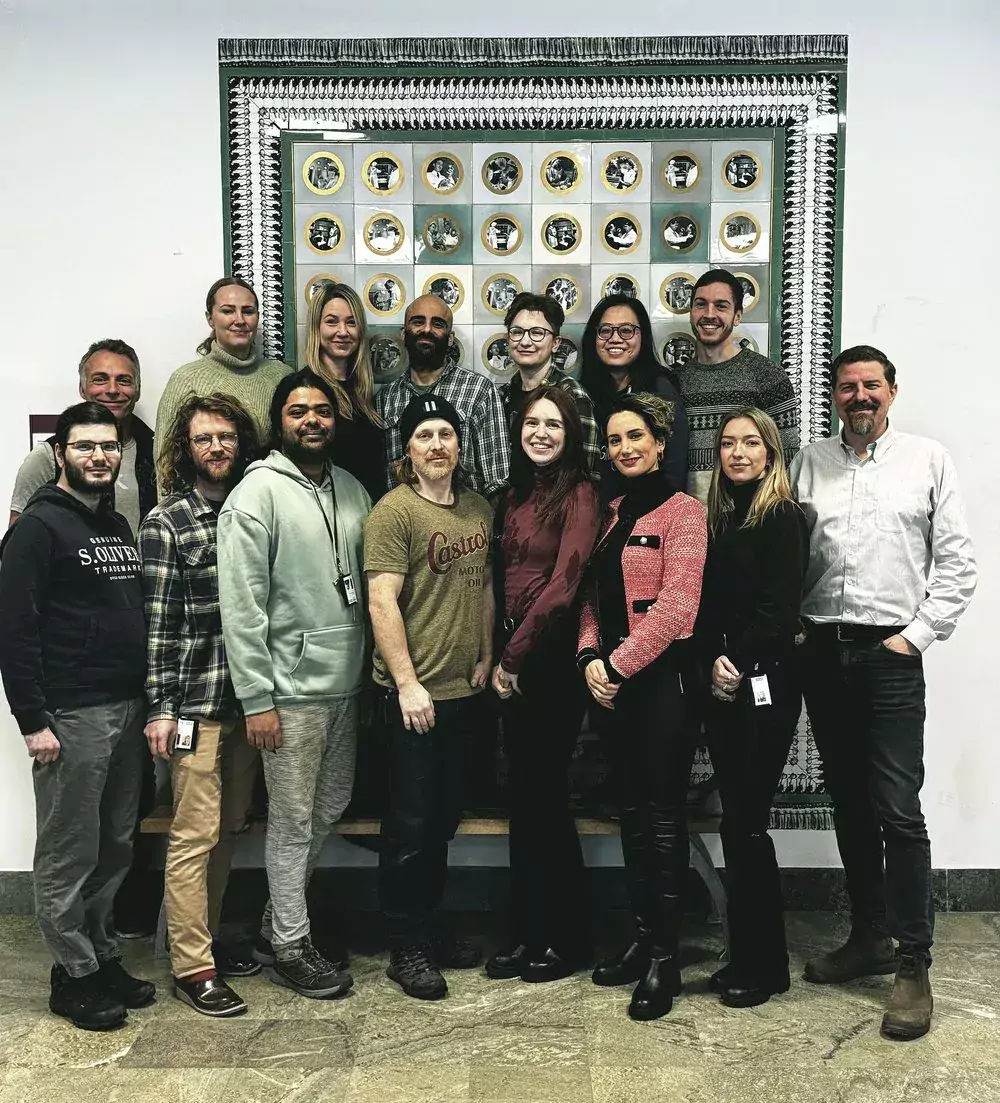
Alumni
Hannaneh Yazdi, PhD student
Zilan Öz, Master's student
Aurélie Hüsslage, Bachelor's student
Chaima Daki Erradi, Master's student
Grigorios Iakovidis, Research engineer
Arnika Pehl, Master’s student
Jonatan Nordmark, Postdoc
Anna-Laura Toth, Research assistant
Moa Peter, PhD student
Johannes Frasnelli, Guest professor
Laura Dukek, Master’s student
Marie Michaels, Master’s student
Behzad Iravani, PhD student
Putu Agus Khorisantono, Postdoc
Andri Savva, PhD Student
Janina Seubert, Senior Researcher
Kathi Prenner, Master’s Student
Andreas Westerdahl, Lab manager
Danja Porada, PhD student
Robin Fondberg, PhD student
Amy Gordon, PhD student
Cécilia Tremblay, PhD student
Milena Di Chira, Master’s Student
Christina Rossi, Master’s Student
Georgia Sarolidou, PhD student
Caitlin Hrysanidis, Master’s Student
Ida Siemens Lorenzen, Master’s Student
Daphnée Poupon, Master’s Student
Alessandro Davoli, Bachelor’s Student
Riccardo Bertaccini, Bachelor’s Student
Christina Schmitter, Bachelor’s Student
Alberto Frigieri, Bachelor’s Student
Barbara Feytl, Master’s Student
Harald Melin, Research assistant
Emilia Johansson, Research engineer
Belinda Miggitsch, Master’s Student
Mirella Engelhardt, Master’s Student
Sissie Carlsen, Master’s Student
Sidney Lind, Internship Student
Anna Belska, Visiting Student
Saskia Borg, Visiting Student
Teams
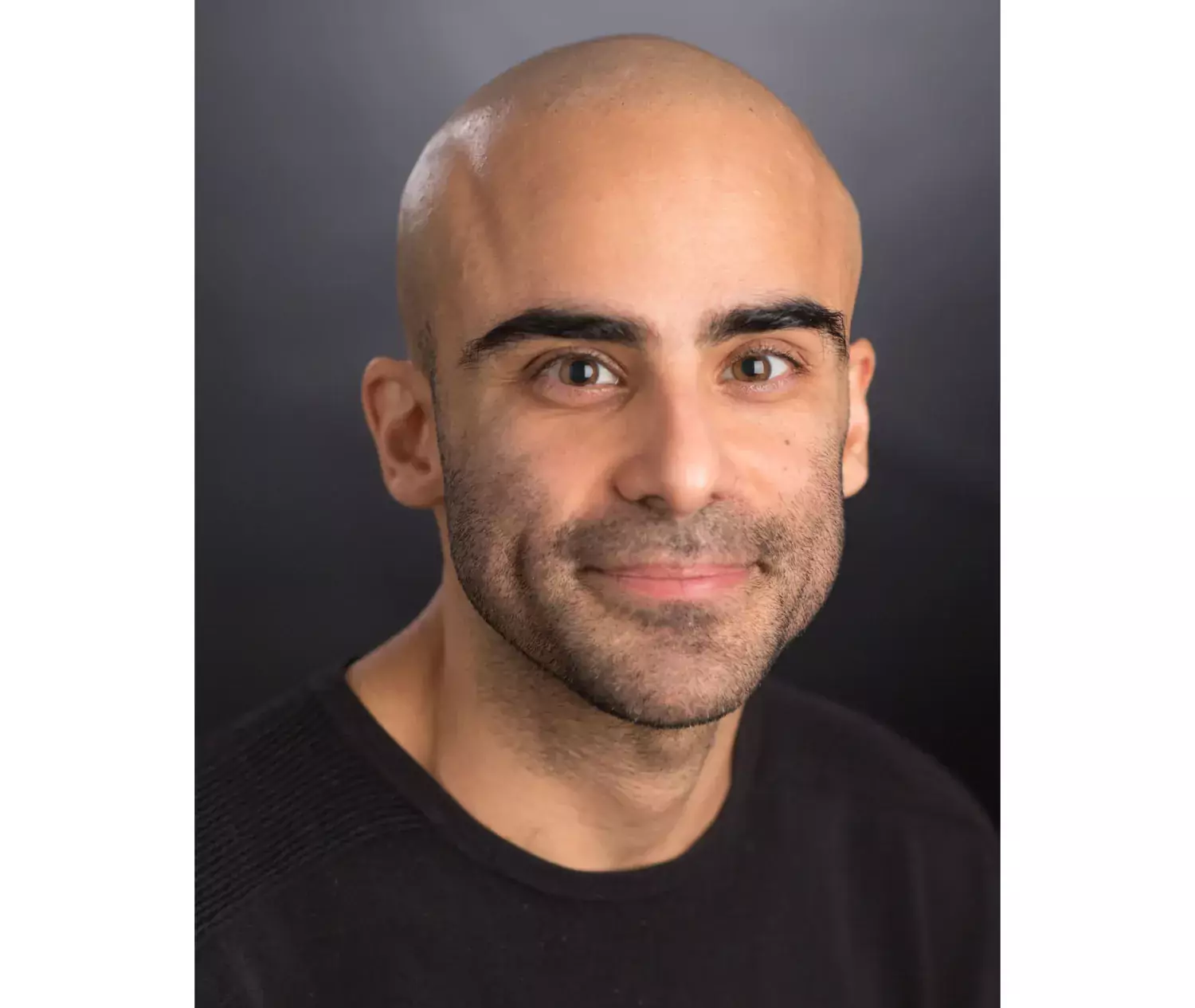 Photo: Bildmakarna
Photo: BildmakarnaTeam Arshamian
The Embodied Perception and Cognition Group studies the olfactory system at the intersection of psychology, culture, neuroscience, and medicine. By leveraging the distinctive features of the sense of smell, we gain insights into how our embodied experiences influence perception and cognition.
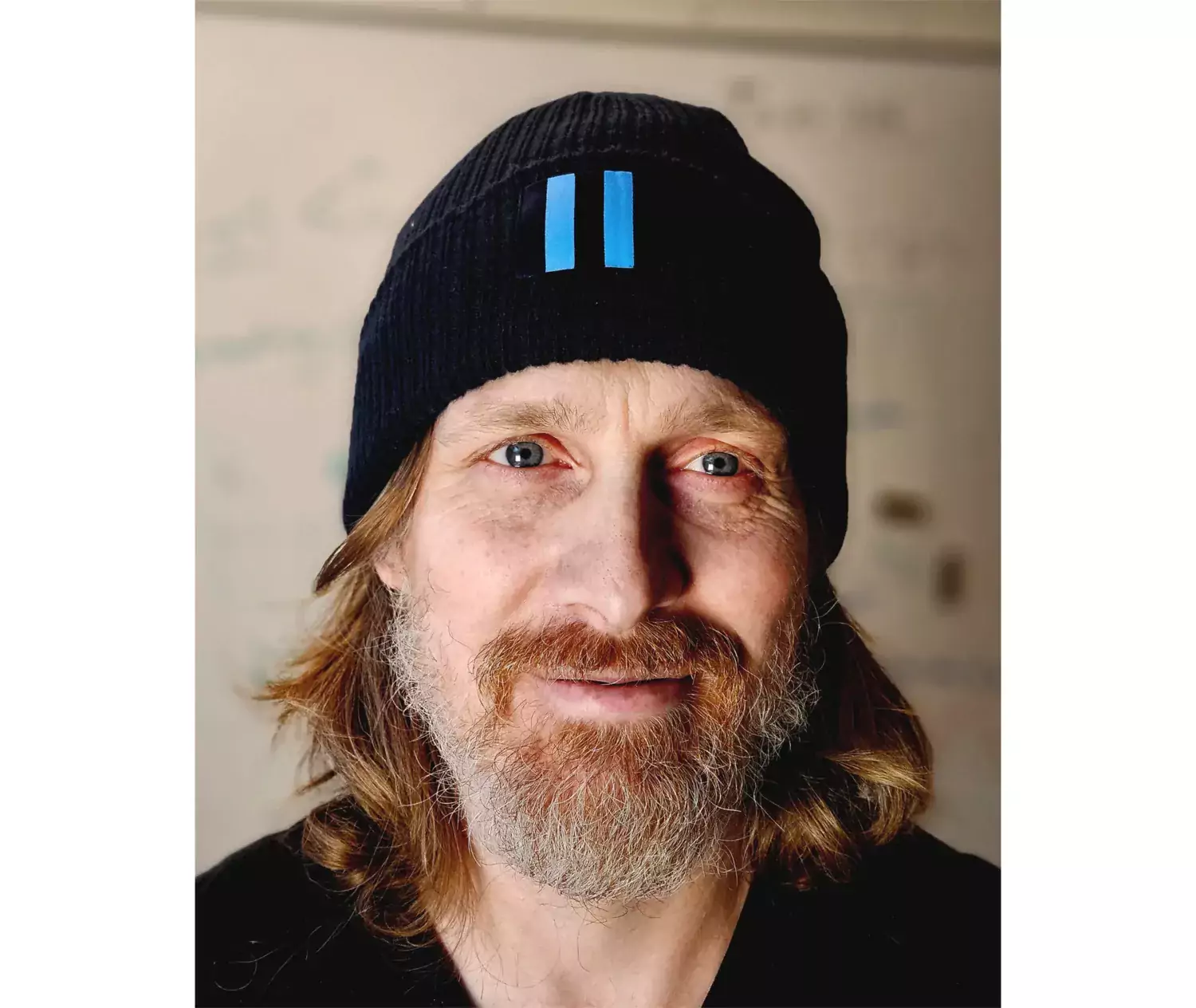 Photo: Johan Liljefors
Photo: Johan LiljeforsTeam Lundqvist
The Computational Cognition Group is interested in the neural mechanisms underlying cognition. We study how neural dynamics support abilities such as temporarily keeping things in mind, planning or prioritizing sensory information. We have a theory-based approach where we deploy neural network simulations to build predictions that we then test in experimental data from human and animal models.